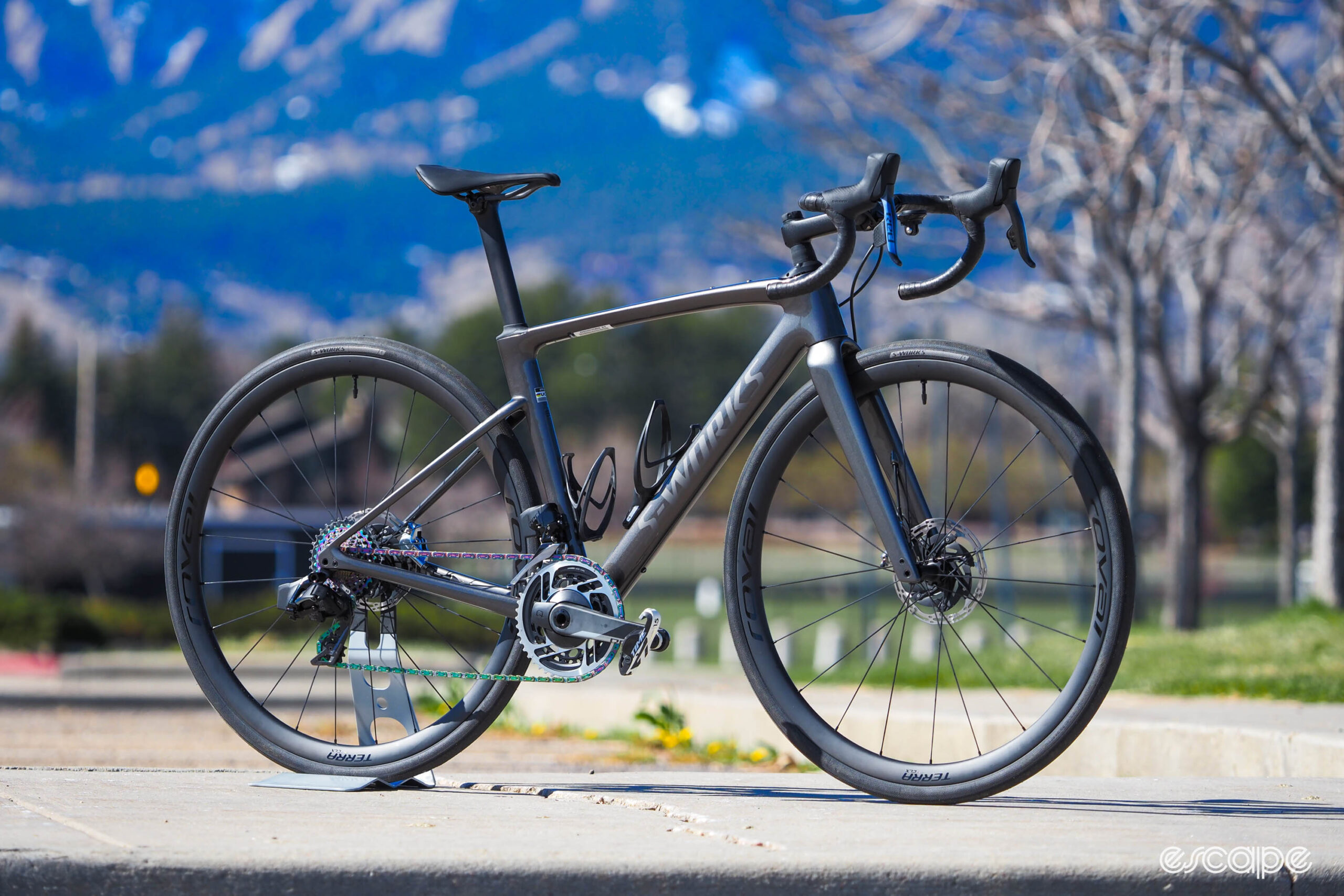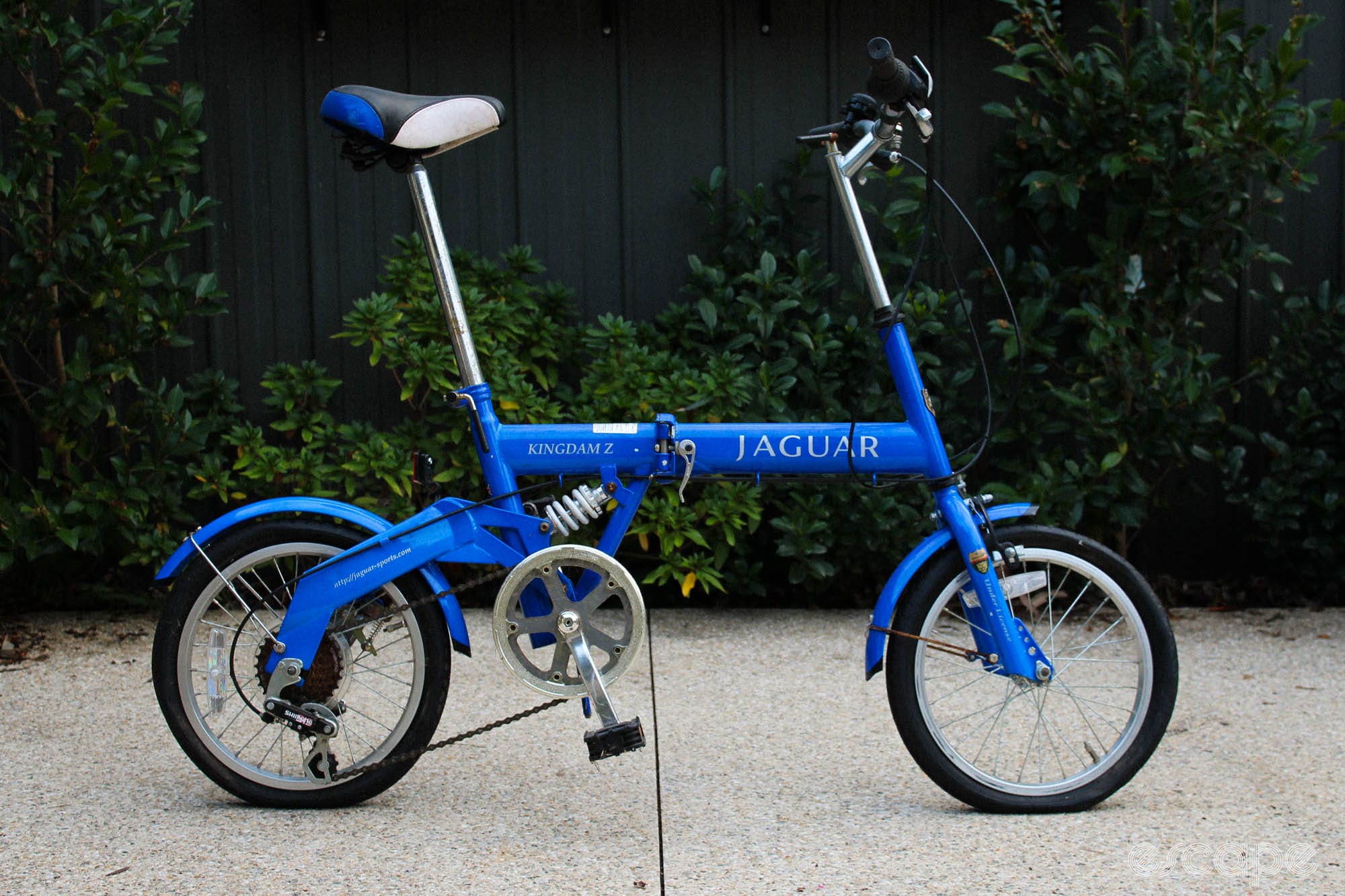It didn’t go unnoticed at this year’s Paris-Roubaix that – for the first time since it was introduced way back in 2004 – none of Specialized’s own sponsored teams raced on the bike that was specifically designed for the event. “A Roubaix for Roubaix? Nah, I’ll take the Tarmac, thankyouverymuch.”
It’d be easy to use that fact as ammunition to say the latest-generation Roubaix isn’t that good of a bike, isn’t for racers, isn’t a true performance machine, and so on. And Specialized practically invites people to hate on them, after all, so criticism of the brand is nothing new. However, looking at that fact in a vacuum also wouldn’t acknowledge how much both the bikes and the race have changed in the past 20 years, and it discounts how versatile and capable this latest-generation Roubaix has become.
Is it the best bike for actually trying to win at Paris-Roubaix in the modern age? Maybe not. And is the bike’s trademark Future Shock front suspension cartridge for everyone? Most definitely no. Regardless, neither of those things changes the fact that virtually no one reading this is getting an invitation to the Paris-Roubaix starting line anytime soon, or that this latest iteration – the Roubaix SL8 – is an extraordinarily versatile and capable road bike that’s arguably better suited for the majority of real-world road riders than a full-blown race machine.
Go ahead and hate on me too if you want, too, but man, has this thing been supremely enjoyable to ride.
Good stuff: The new Future Shock 3.3 cartridge finally performs the way it should, wonderfully light and efficient-feeling frame, excellent tire clearance, generous mounting options, no-compromise build kit, no headset cable routing, still compatible with mechanical drivetrains.
Bad stuff: Ride quality can still be imbalanced front-to-rear, goofy headset adjustment procedure, sky-high stack height, not exactly the prettiest thing.
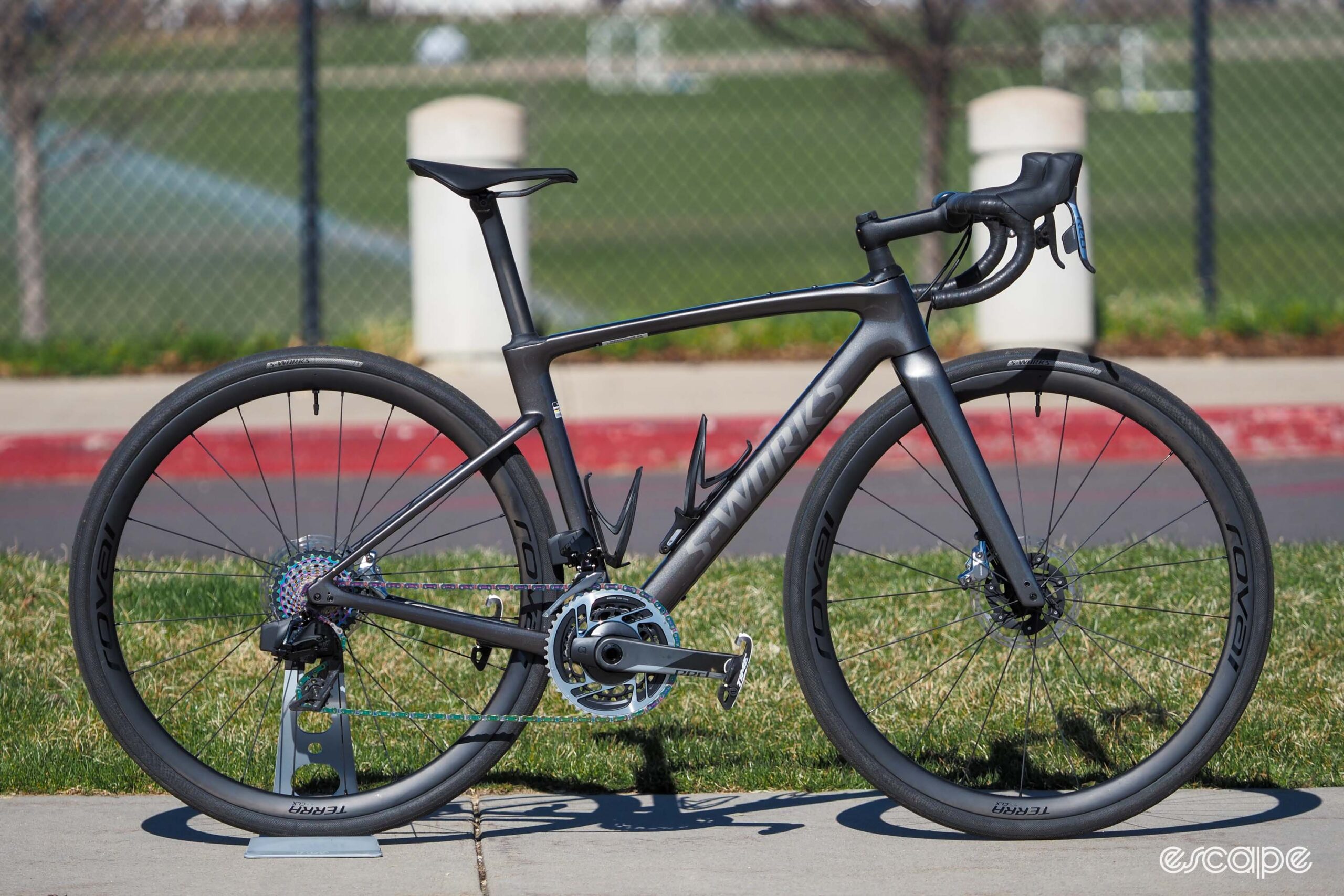
Oh, how far we’ve come
The Specialized Roubaix was a pioneer in the endurance road bike category when it was first introduced, featuring a softer-riding carbon frame and subtly relaxed handling that company founder Mike Sinyard described at the time as offering the “cutting edge on stiffness and weight yet fits riders better and absorbs energy better than existing frames.”
Fast forward a couple of decades and the two generations of Roubaix are now so different that it also seems silly that they wear the same model name.
Those just-for-show Zertz elastomers? Gone. And the 23 mm-wide (!) tires the bike came with back then? Ha ha.
Whereas Specialized concentrated more on vibration absorption and “compliance” back then, the reality is that there’s only so much flex you can get out of a traditional double-diamond frame before you start compromising on other performance characteristics. As such, the last few generations of Roubaix have used more dramatic means to smooth out the ride, notably with the Future Shock suspension cartridge up front that’s lived above the head tube since it debuted in 2016, and maximizing seatpost flex out back with progressively shorter seat tubes that leave more of the shaft exposed.
The new Roubaix SL8 model doesn’t stray from that script. However, it includes significant refinements that aim to pull more potential from both concepts while simultaneous eking out more performance overall.
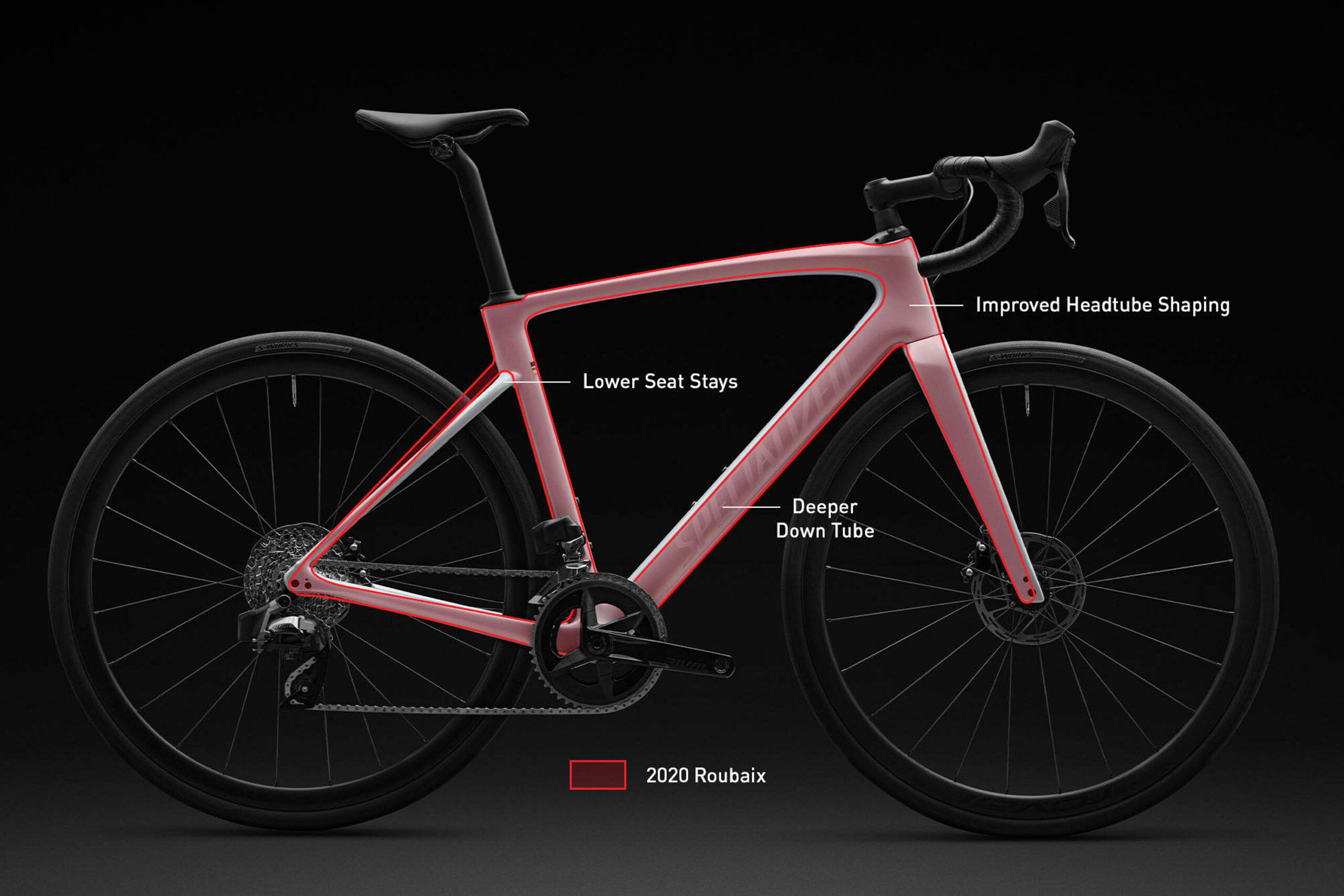
As before, the Future Shock cartridge is a standalone unit that bolts in between the top of the truncated fork steerer and the stem, offering 20 mm of movement on a series of low-friction needle bearings. But whereas previous iterations felt somewhat half-baked, the third-generation edition is finally fully realized (at least in the top-shelf model).
There are three versions of Future Shock this time around: the 3.1, 3.2, and 3.3. All of them feature interchangeable steel coil springs (firm, medium, or soft) to better accommodate different positions and estimated rider weights from 50-125 kg (110-275 lb), and each of those springs can also be preloaded with stackable washers to tweak the initial sensitivity. The 3.1 (used on the Roubaix and Roubaix Sport models) uses the steel coil spring by itself with no damping. The 3.2 (found on the Roubaix Expert and Roubaix Comp) couples the coil spring to a hydraulic damper with factory-set compression and rebound valving. And finally, the 3.3 (used on the S-Works Roubaix and the Roubaix Pro) gets a little fancier with a top-mounted five-step compression adjuster so you can tune the firmness on the fly.
In a refreshing nod to interchangeability, all of those Future Shock cartridge share identical external dimensions, and Specialized offers them separately for riders interested in upgrading (although because the lower section extends further into the steerer tube, for previous-generation Future Shock bikes, only size 56 cm and larger will work). Specialized covers the cartridges with a separate two-year warranty, and while the major components can be serviced by authorized dealers (the dampers are factory-sealed and non-serviceable), they’re “meant to last for many seasons without service or any special maintenance” as long as the newly smooth rubber boot remains intact.
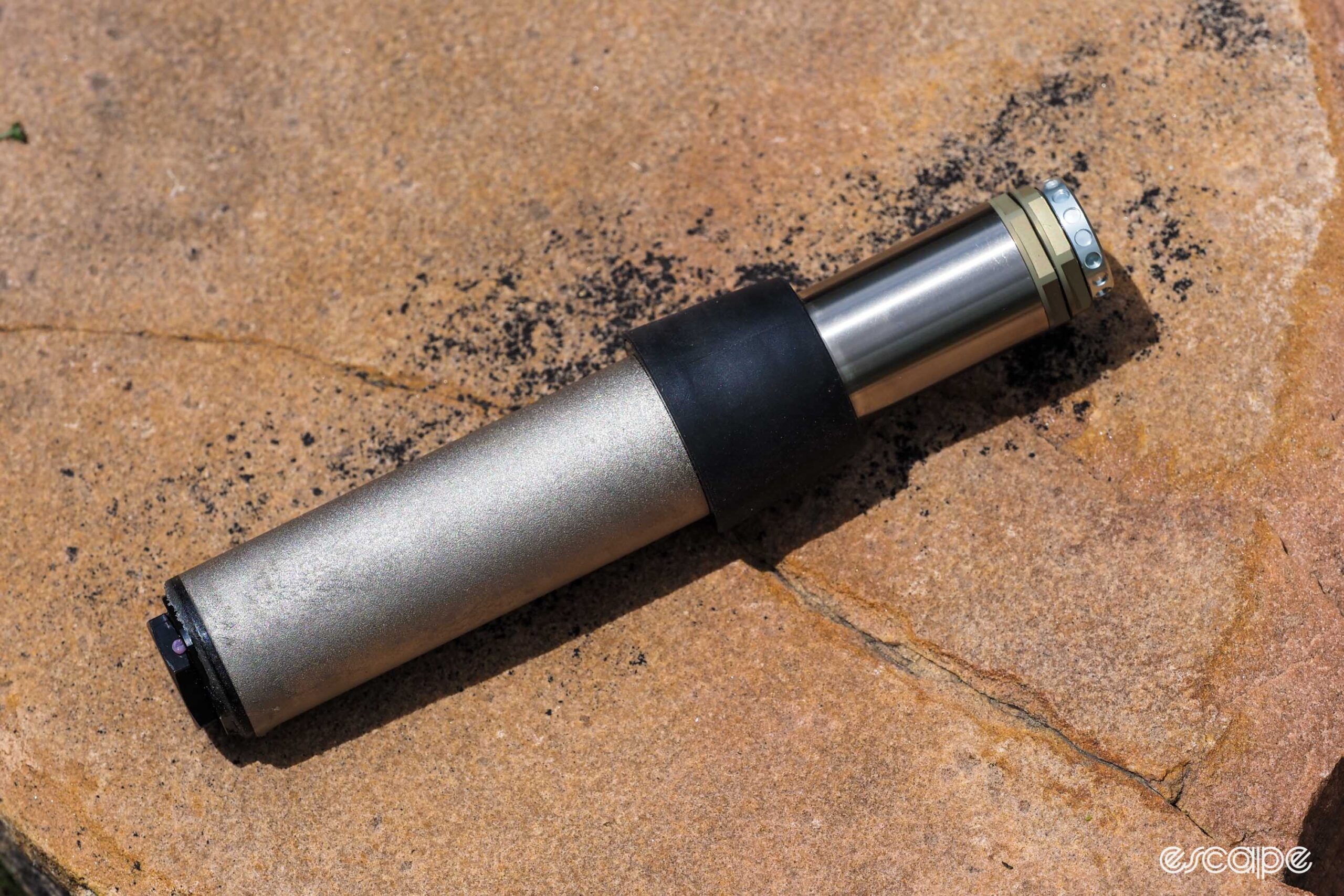
“At this point, we are heavily invested on Future Shock,” said Specialized senior product manager John Cordoba. “We have a total of five platforms all using Future Shock. This is the third generation of Future Shock, and to ensure we continue to serve riders who have older Future Shock bikes, all our Future Shocks are backwards compatible to the first Future Shock bike from 2016.
“We will keep producing Future Shocks for five years after the last-iteration Future Shock bike is produced. It’s likely that we will continue to have inventory for quite a while after we stop producing the previous Future Shock bike. For whatever reason, if we can’t get the rider a replacement Future Shock 15 years from now, and we are not able to rebuild their Future Shock, we are committed to working with retailers and riders to keep them riding.”
Fingers crossed.
It’s a simpler story at the other end, with the Roubaix SL8 relying on tried-and-true seatpost flex to get the job done (plus some slightly dropped seatstays to help the seat tube bend a little in kind), along with the knowledge that longer seatposts will bend more under load than shorter ones.
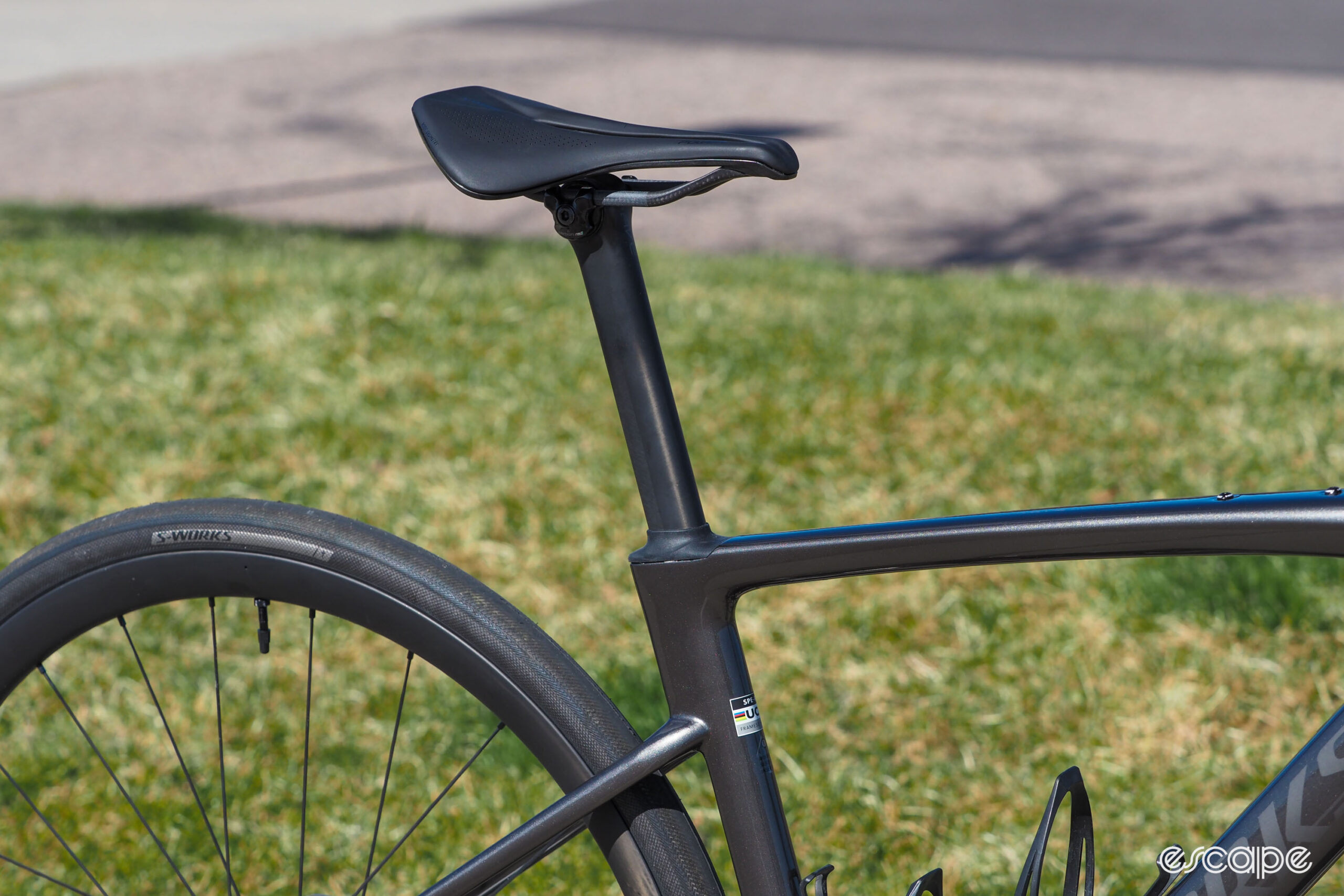
Specialized doesn’t resort to a particularly shallow seatpost shape to make it extra-bendy, though, nor does the Roubaix SL8 feature a more radically sloping seat tube to expose more seatpost shaft. In fact, the seatpost is still fairly deep (for aero efficiency, of course), although the flat-backed profile and flex-tuned carbon layup supposedly make it more amenable to flex than a conventional round or ovoid seatpost of similar dimensions. And as a workaround for a more compact frame (which apparently wasn’t visually appealing and also leaves less room for stuff like bags and bottles), Specialized instead recesses the seatpost clamp 65 mm down from where it’d normally be and leaves enough space inside the rest of the seat tube for the post for move around without hitting anything. Sealing up the otherwise gaping maw is a nicely fitted molded rubber cover (although the bulbous upper section of seat tube still looks rather awkward to my eye).
With rider comfort features isolated to dedicated structures at either end, frame designers were free to go nuts elsewhere in terms of more traditional performance metrics. The inflated proportions of the main triangle, rear stays, and even the fork hardly suggest a cushy ride, but then again, they don’t have to. Specialized promises the Roubaix SL8 is essentially just as responsive under power as a dedicated road racing bike, while a 50 g weight reduction has brought the claimed weight of a painted 56 cm frame down to just 828 g (without the Future Shock cartridge, which is a hefty 386 g for a 3.3 model). And if aero is your thing, Specialized says it’s made gains there, too, to the tune of 4 watts of energy savings at 45 km/h.
From a more practical standpoint, the Roubaix SL8 is impressively versatile. 700x32 mm-wide tires come stock, but there’s room for 40 mm-wide ones (measured width), meaning you could easily use the Roubaix for some light-duty gravel. Conversely, Specialized says 28 mm-wide rubber will handle just fine in the event you want to use the Roubaix solely as a go-fast bike on tarmac (see what I did there?). Inside the main triangle are the usual two bottle mounts, but there’s a third under the down tube as well as threaded holes on the top tube for a feed bag. Proper fender mounts are molded directly into the frame front and rear, too, with no goofy add-on kits required (although that does drop the maximum measured tire size to 700x35 mm).
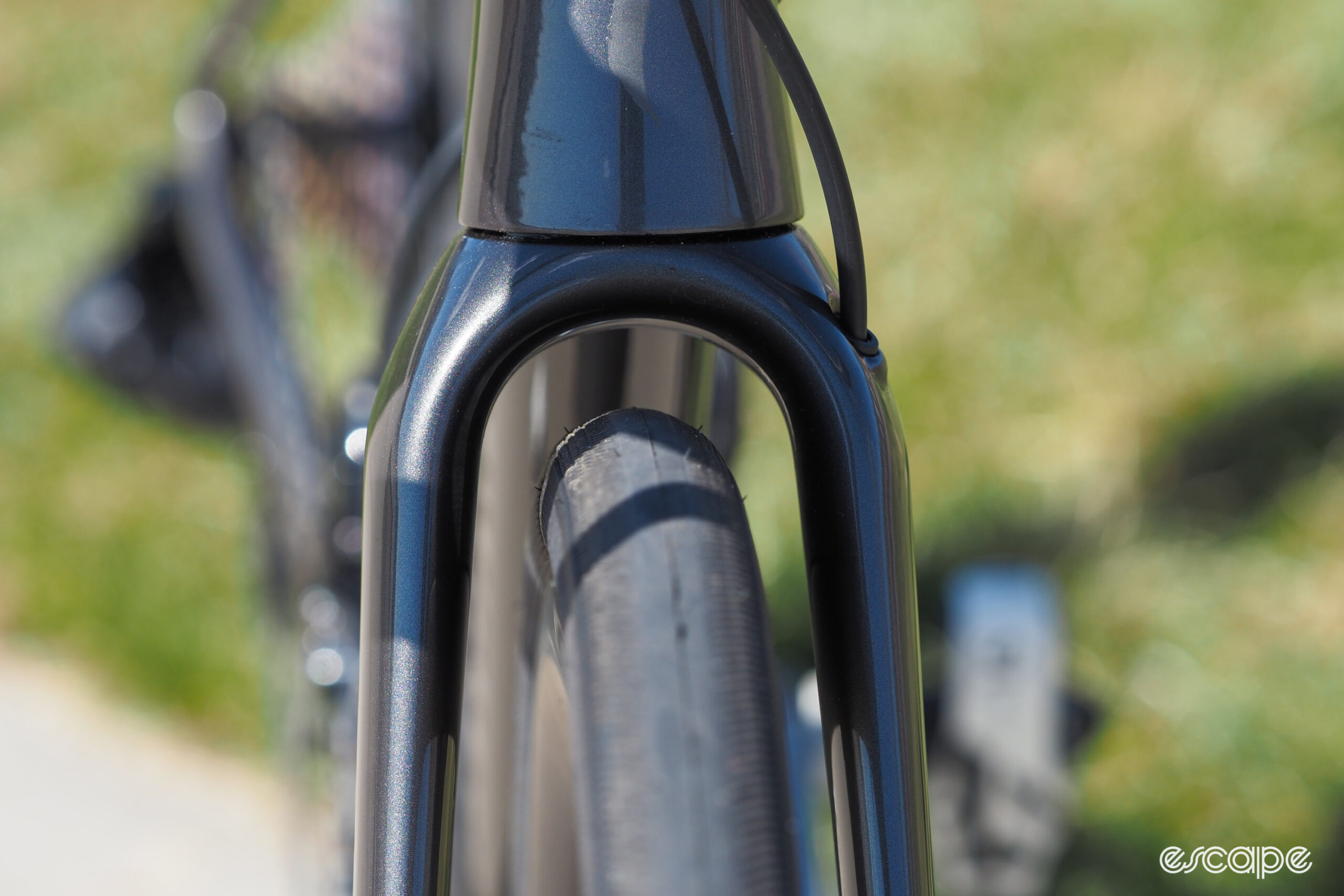
In terms of geometry, Specialized hasn’t strayed too far across the impressively broad eight-size (44-64 cm, depending on model) range from the formula that’s brought the Roubaix so much success over the years, although there are still some notable updates. The front end receives a combination of slightly slacker head tube angles, larger fork offsets, and/or subtly extended reach dimensions, which combined extend the front center by about 10 mm for decreased toe overlap. Out back, the chainstays have lengthened by 5 mm to maintain roughly the same front-to-rear weight bias as before, while the bottom bracket drop has increased by a couple of millimeters – ranging from 78-80 mm – likely to account for the larger stock tires.
The resultant increase in wheelbase across the board suggests more stable handling, but while trail dimensions have also increased a few millimeters, they’re still in the high-50s/low-60s for most sizes so it’s not like the Roubaix SL8 is meant to steer like an ocean freighter.
Changes in rider position are more minute. Stack and reach on larger sizes grow by a handful of millimeters, but are effectively unchanged. As before, the Roubaix still delivers a comparatively relaxed and upright posture, particularly with the stock Hover Bar handlebars and their 15 mm of integrated rise. Seat tube angles are also a little steeper (especially on smaller sizes) for the more forward positions increasingly favored by riders these days.
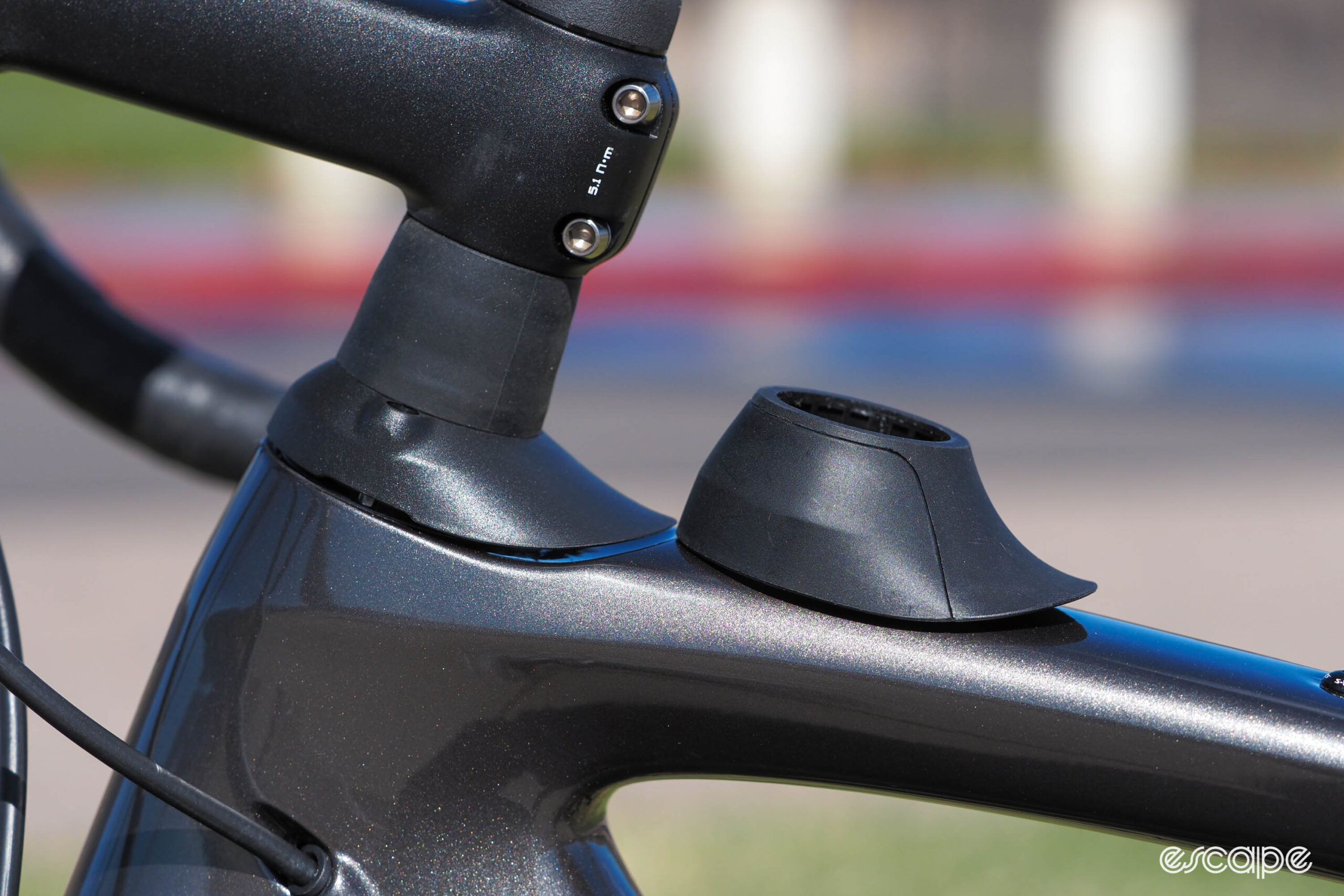
Specialized is offering the new Roubaix SL8 in seven complete builds plus a bare frameset option, with prices for complete bikes ranging from US$2,800 / AU$3,900 / £2,500 / €2,800 for the base Roubaix SL8 up to a whopping US$14,000 / AU$19,900 / £12,000 / €14,000 for the S-Works model.
Specialized – as it is apt to do – sent over the flagship model for review here with all the bells and whistles, including a SRAM Red AXS wireless electronic groupset, Roval Terra CLX wide-profile carbon fiber wheels wrapped in 32 mm-wide Specialized S-Works Mondo tires, S-Works carbon fiber cockpit components, and a rather serious-looking “gloss smoke/satin black pearl” paint job. Heck, their in-house mechanics even took the liberty of hot-waxing the chain (which is most definitely not a standard treatment).
Actual weight for my 52 cm sample was 7.41 kg (16.34 lb) set up tubeless, and including the integrated aluminum computer mount (made for Specialized by Bar Fly) and 120 mm-long stem I needed to get my desired fit, well inline with the the claimed 7.34kg (16.2 lb) figure on the company web site. Considering the heftiness of that Future Shock cartridge, I consider that a mighty impressive figure.
Ride report
Remember me mentioning up top how the Roubaix wasn’t raced by any of Specialized’s sponsored athletes at Paris-Roubaix this year, and how some people have been using that as justification that it’s somehow “lesser than” the Tarmac? The Roubaix has often been viewed as playing second fiddle to the Tarmac, but that only applies when viewed through the “racing is gospel” lens that continues to stubbornly pervade the road cycling world. While it’s entirely possible this is more an indication of where I’m at personally in my road cycling journey, I think I’d actually take the Roubaix over the Tarmac myself.
First and foremost, it’s hard to convey just how stupidly smooth the front end of the new Roubaix SL8 is. With the right coil spring installed and the damper set to full-open, it’s astonishing for my current 73 kg (161 lb) weight how well the latest Future Shock cartridge just flat-out erases most common road impacts, let alone smaller – but more pervasive – stuff like coarse road texture or frost heave. It’s active and supple, the bar angle doesn’t change while it moves through its travel, and there’s no off-axis or rotational play whatsoever from the needle bearing assembly.
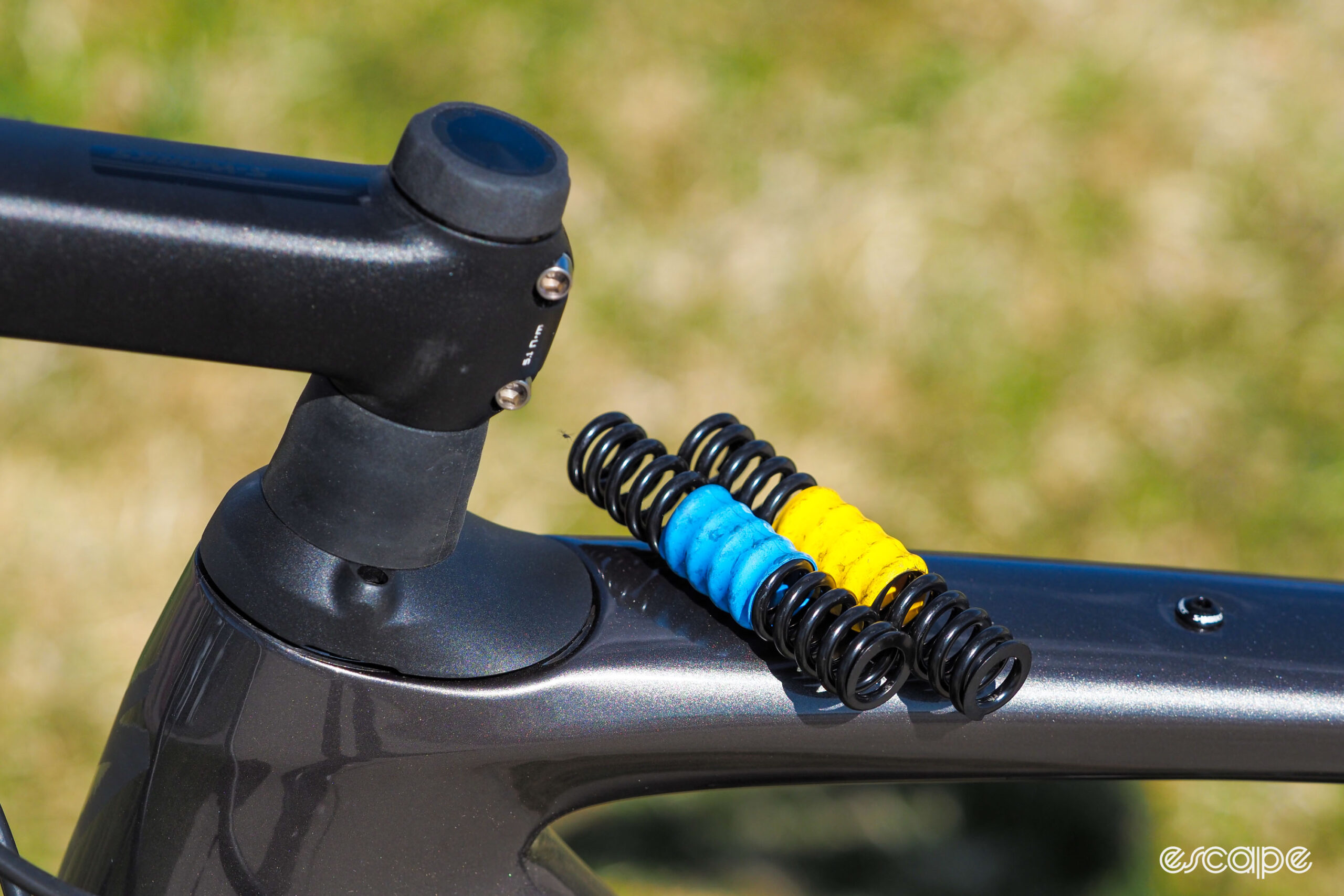
Case in point: there’s a series of speed tables on the way home from one of my regular lunchtime routes, and I regularly have to brace myself for the impact of hitting the front side – not because they’re big, but because of the abrupt change in angle. But on the S-Works Roubaix SL8, I just ride over them without a second thought, and with almost no disruption to my rhythm, either.
It doesn’t feel like you’re riding an under-inflated tire, either, nor is it unduly bouncy like the original Future Shocks (and the legacy 3.1 model) used to be. Heck, there isn’t even an annoying clunk at top-out, and while I’m pretty sure I’ve used all the available travel a few times, it’s always been a soft landing. I noticed some bobbing when climbing with the damper is adjusted to its softest position, but only when I was out of the saddle, and even then I can’t say it bothered me much.
The compression adjuster has a usefully wide tuning range, too. In the softest setting, the front end is free to move on just about everything, offering a supremely silky smooth ride. But at the opposite end of the dial, the front end feels quite firm – not quite locked out, but not too far off, either. It’s where I typically set things if I knew I was going to be on paved surfaces for an entire ride, but I otherwise was quite content to leave it in one of the softer settings.

The Future Shock isn’t only about comfort, though; I’d argue there’s a performance element to it, too.
I’ve long held the opinion that I can descend faster on road bikes with softer vertical flex patterns than firmer ones. Without any proper suspension, you’re usually reliant on chassis tuning and tire size/pressure to keep the rubber on the ground. But between the Future Shock-equipped fork and the stock 32 mm-wide S-Works Mondo tires, the front end of the S-Works Roubaix SL8 feels vacuumed to the asphalt. There’s no skittering around if the tarmac is less than ideal through a corner, and no sensation that your contact patch is changing depending on road conditions. Just like on a suspension-equipped mountain bike, you can instead aggressively drive the front end into a turn and let the suspension do much of the work for you.
But as is often the case on road bikes with dedicated suspension elements, there’s a degree of imbalance in terms of ride quality. On Trek’s IsoSpeed-equipped bikes, for example, I’ve generally found those feel more comfortable out back than up front. But on the Roubaix SL8, it’s the opposite.
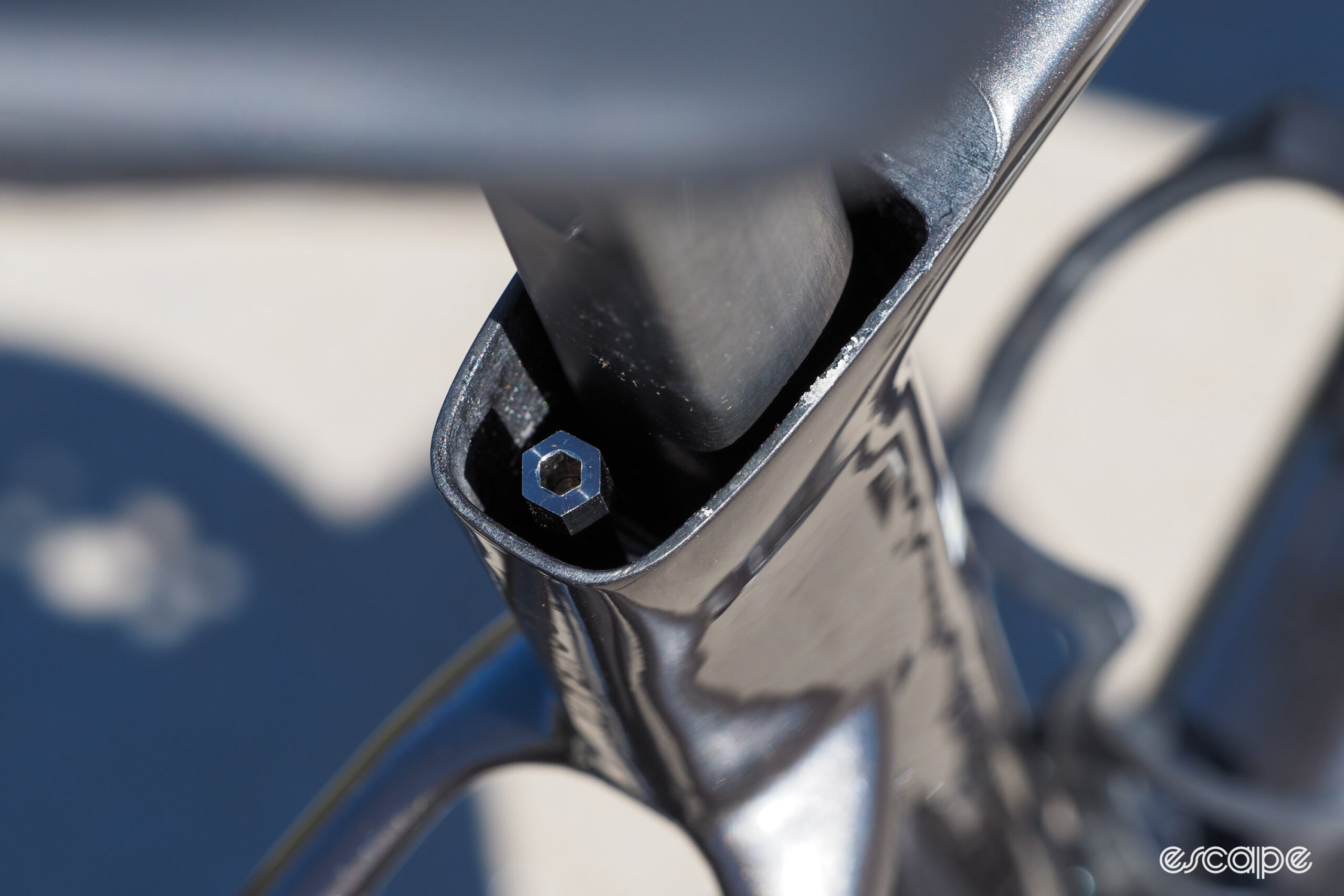
That curious seat tube and seatpost construction does produce noticeably more flex than a more conventional setup – and yes, you can see it even when just leaning your weight into it at a standstill – but it’s still firmer and less sensitive to smaller obstacles than the front end. That imbalance is less pronounced when the Future Shock cartridge is dialed to its firmest setting, but it’s unfortunate that Specialized doesn’t offer the same range of tuning options for the seatpost as it does up front. Granted, there’s also the Diverge STR, but that strikes me as a bridge too far for an endurance road bike, and it seems reasonable that more than one seatpost flex pattern could be made available.
Alas, this is probably why I’m not a product manager.
What’s perhaps impressed me even more about the Roubaix SL8 than its comfort, though, is that it still very much feels like a performance machine. Because the ride quality elements are isolated to the Future Shock cartridge and seatpost, Specialized was free to focus on efficiency elsewhere. The seatstays are still dropped to help promote seat tube flex on bumps, but the tube profiles are otherwise notably big and bulbous – even the fork blades are deeper and more aggressively aero than you’d expect for a bike in this category.

As such, the chassis feels wonderfully responsive under power, whether motoring up a long uphill drag or during a short burst out of the saddle for a steep pitch, and without even a bit of the ride harshness typically associated with those sorts of reflexes.
Granted, we’re again talking about the flagship S-Works model here, but it obviously doesn’t hurt that that it’s surprisingly light. I didn’t verify the claimed frame weight, but given the 7.41 kg (16.34 lb) total of my test sample, I don’t have much reason to doubt its veracity (although, again, that 828 g figure doesn’t include the hefty Future Shock cartridge). The lack of heft is very welcome on longer and steeper climbs, and kudos to Specialized for managing to keep the weight down despite the additional hardware.
As for the handling, there’s no question the Roubaix is not a Tarmac. It’s slower to initially turn in, less eager to change a line mid-corner, and more relaxed in general. That said, it still carves a tight arc just fine if you put enough lean into it, to the point where I’d say if you can’t make the corner, it’s not the bike’s fault. I also found the additional stability to be a boon on the high-speed descents that litter my local stomping grounds. The numbers on my computer tell me I’m going faster, but the sensation is that things around you have slowed down a bit since the bike isn’t as nervous.
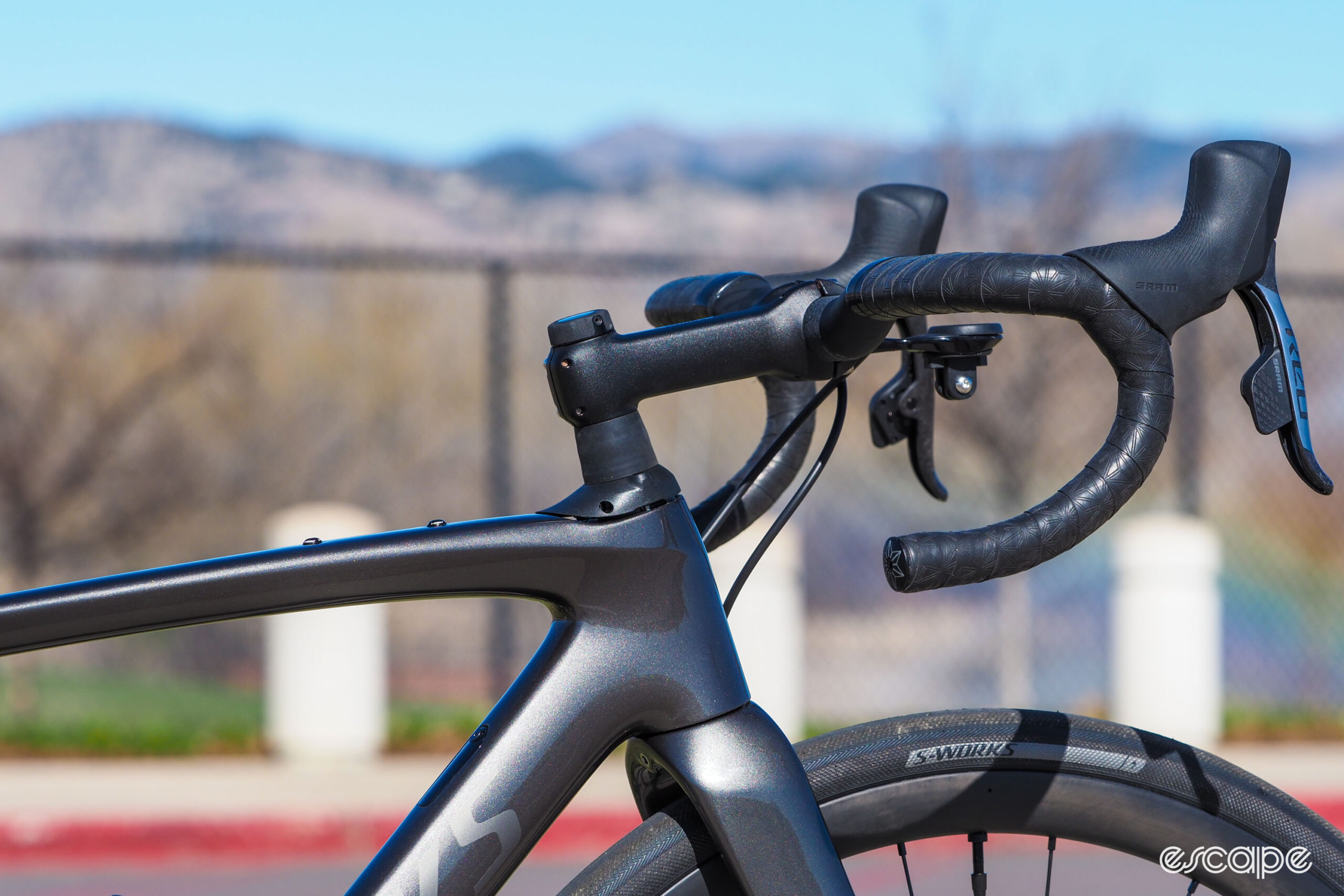
Rider position is perhaps where the Roubaix has the toughest time making the argument against the Tarmac. The reach dimensions are shorter across the board, though not dramatically so. I suspect most riders would be fine going 10 mm longer on the stem than what they’d typically run on a Tarmac, although you should also keep in mind the Roubaix SL8s are also outfitted with shorter stems out of the box (I did just fine with a 120 mm-long stem instead of the stock 90 mm one).
Stack is a different story as there’s just no way to avoid a much taller grip height given how the Future Shock cartridge has to live between the upper headset cover and the stem. Specialized includes two different covers depending on your preferences, but it’s not like it’s “short” and “tall”; rather it’s “tall” and “even taller." As compared to an Aethos in the same 52 cm size of my loaner, the Roubaix is nearly 40 mm higher in the lowest setting. And while I found the shape of that Hover handlebar to work well in my hands, I could have done without the additional 15 mm of built-in rise on top of that. Sure, you can run a -17° stem and a conventional bar, but there’s only so much wiggle room here.
Provided you can get on with the riding position, I’d say Specialized has done an excellent job of continuing to refine the Roubaix formula, to the point where my sample has been an absolute joy to ride on a wide range of roads – both paved and unpaved – and without the sense I was making a bunch of compromises in the process as I’ve often felt on older Roubaix generations. If nothing else, the Future Shock 3.3 is enough of an improvement over its forebears that it strikes me as a worthy upgrade for older bikes if it means staving off buying a whole new one (and you ride a 56 cm or larger frame).
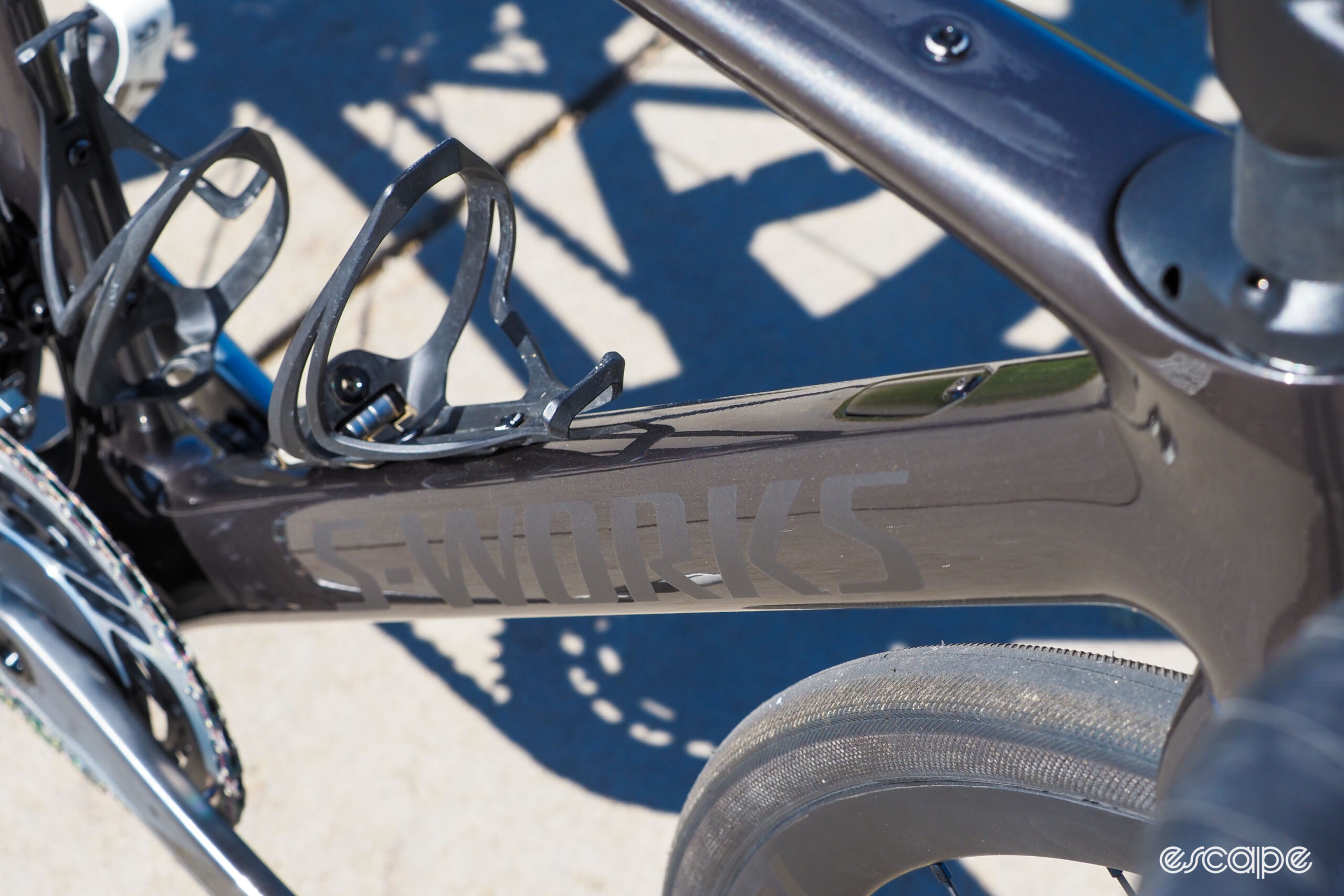
That said, there are still some aspects of the Roubaix I don’t exactly love.
While the current iteration of the headset preload adjustment is much better than it was originally, I’m still not a fan. The fixed clamp at the top of the steerer tube incorporates two threaded pins that push down on the headset split ring to preload the bearings. Resting on top of those are two grub screws, and tightening them against each other is how you lock in the adjustment (kind of like an old threaded headset, ironically). While I’ve no doubt Specialized says it’s fine, I’ve never been fully comfortable with how the split ring is only preloaded at those two points, and adjusting those threaded pins requires a proprietary tool that you’re almost guaranteed to not have on you if it happens to come loose during a ride. Nor do I like the huge gap that exists between the headset cover and headset bearing, which practically invites contamination from debris and water. On the upside, at least none of the control lines are routed through the headset so replacing those bearings is still a comparatively cheap and easy job.
Up top, Specialized has done a nice job refining the look of the molded rubber gasket that seals up the otherwise-open seat tube. It fits tightly and looks good. Rubber parts like that have an annoying tendency to disintegrate over time in the intense high-alpine sun that typifies Colorado weather, however, so I can’t help but wonder how well that material will hold up over time. And sadly, it’s one of those things that won’t keep the bike from functioning later on, but it sure would be a bummer if 10 years from now, an otherwise happy Roubaix SL8 owner is forced to cruise around with a gaping opening around the top of their seat tube because they can’t get that small part anymore.
Build kit breakdown
There’s not a whole lot on the spec sheet that requires a particularly deep discussion.
The SRAM Red AXS wireless electronic groupset has worked really well during my test period, and bonus points to whoever at Specialized was responsible for picking the 1:1 climbing gear. Otherwise, I won’t waste too much time going over other aspects of that groupset’s performance here. Much has already been said, and let’s be real here: we all know the revamped version is landing any day now.
But those Roval Terra CLX wheels? The first-generation version was one of my favorites for its combination of impressively low weight, the any-conditions aero performance, the hooked rim format, and the generous 25 mm-wide internal width. That hasn’t changed since then, and if anything, Specialized is more aggressively machining the hubs between the spoke holes so they’re even lighter than they used to be.
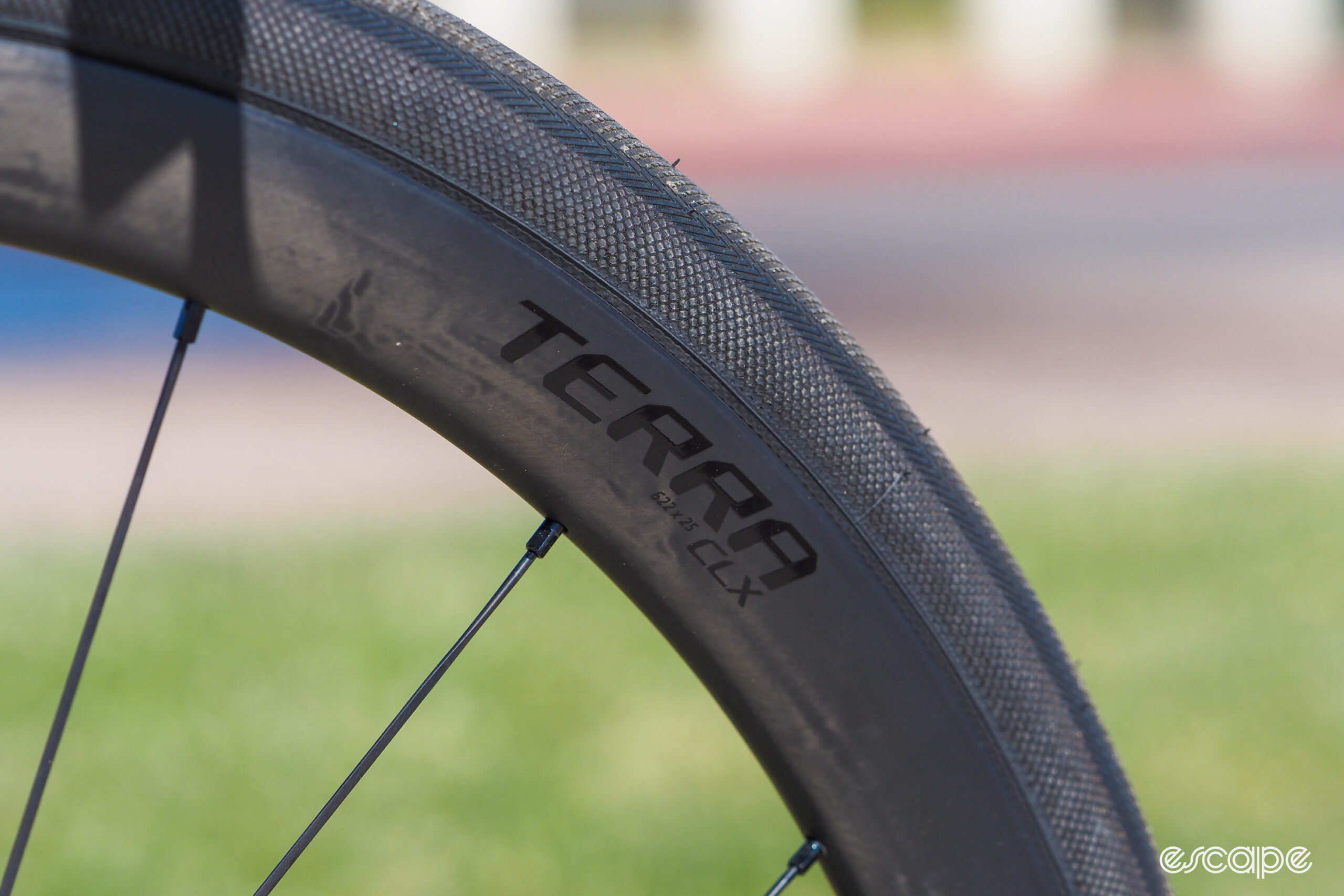
I’d already been riding the S-Works Mondo tires for the past several months, and this experience on the S-Works Roubaix SL8 has only reinforced my favorable opinion of them. They’re not ultra-supple like the venerable Turbo Cotton, but they’re pretty darn good for a 32 mm-wide tire that’s intended to see some abuse. Traction is excellent, too, and they roll much better than I expected them to. Put another way: a set of 35 mm Mondos lives full-time on my personal Allied Alfa Allroad.
I’ve already mentioned that my hands got on great with the shape of the Hover handlebar, but given the intended use of the S-Works Roubaix SL8, I wouldn’t have minded some thicker bar tape. Look, I know that Supacaz founder Anthony Sinyard is Specialized founder Mike Sinyard’s son and all, but a bike like the Roubaix should come with more padding on the bar, and just because Supacaz doesn’t offer such a thing doesn’t mean it shouldn’t be there.
Farewell, S-Works Roubaix SL8. I’ll miss you.
If you’ve gotten the impression at this point that I’m a pretty big fan of the S-Works Roubaix SL8, well, then I guess I did my job properly as I’m genuinely sad to see it go. It may not be as hard-edged or outright fast as a Tarmac, but it’s also been a long time since I’ve signed up for a crit, and my guess is that would apply to an awful lot of you all, too.
More information can be found at www.specialized.com.
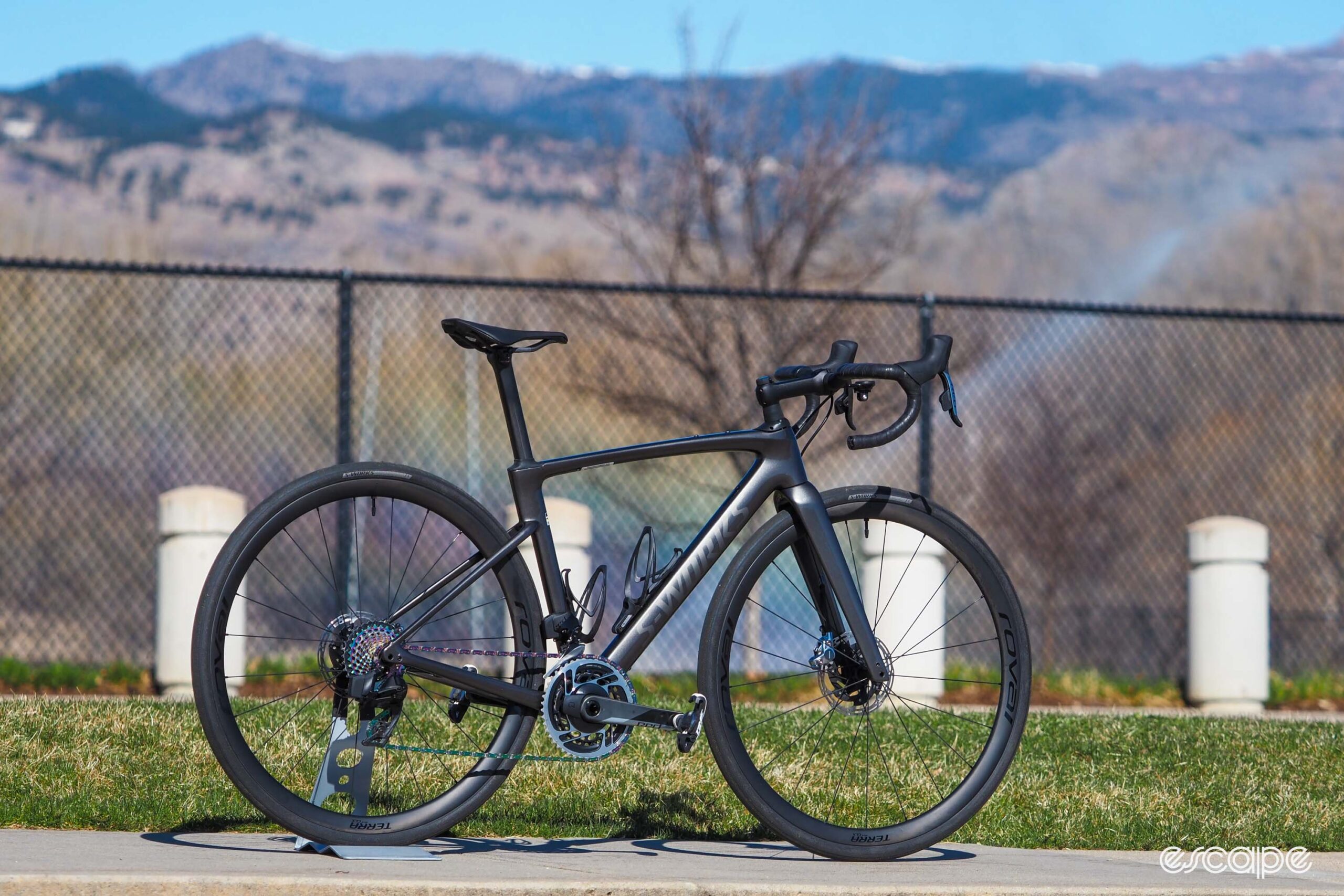
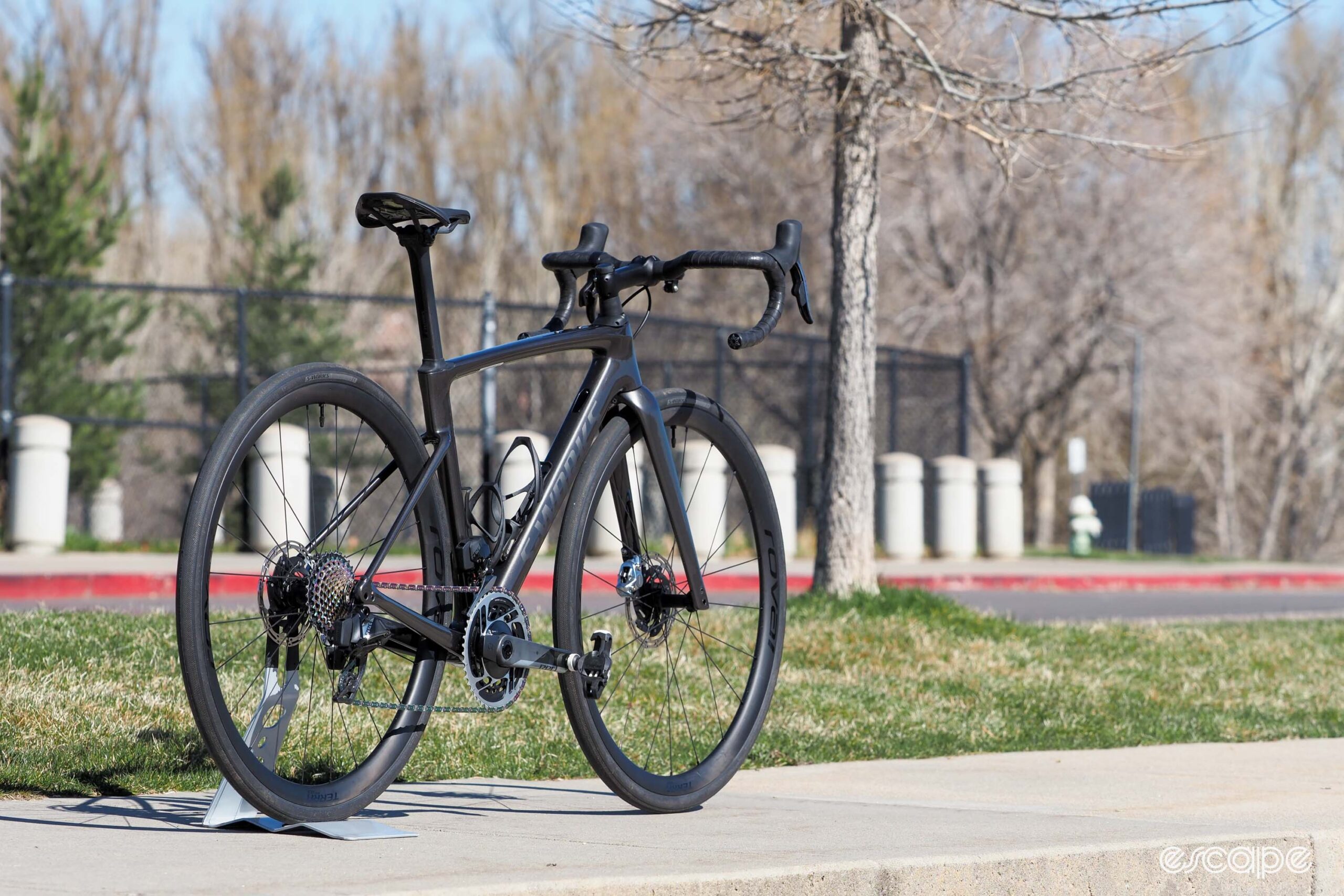
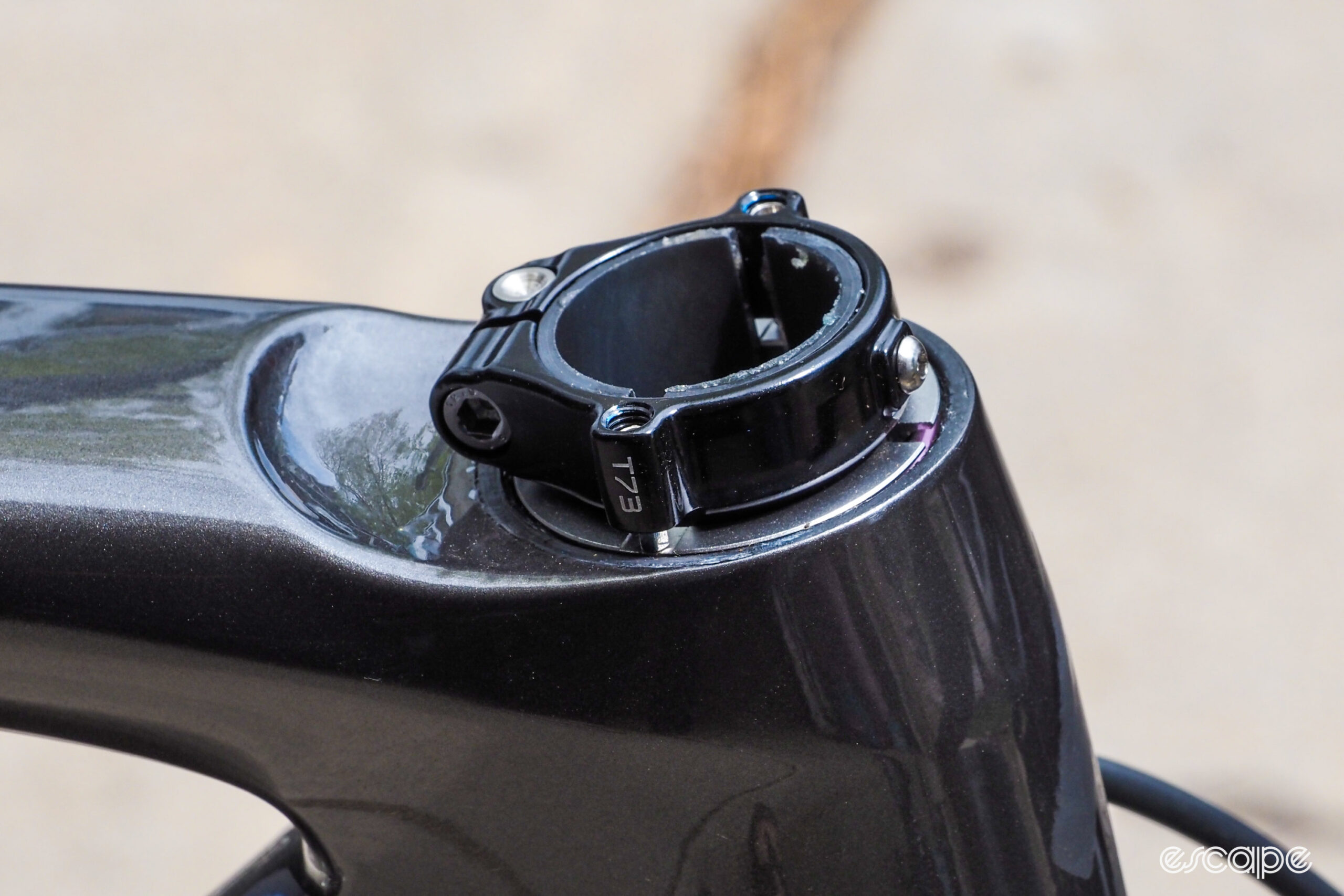
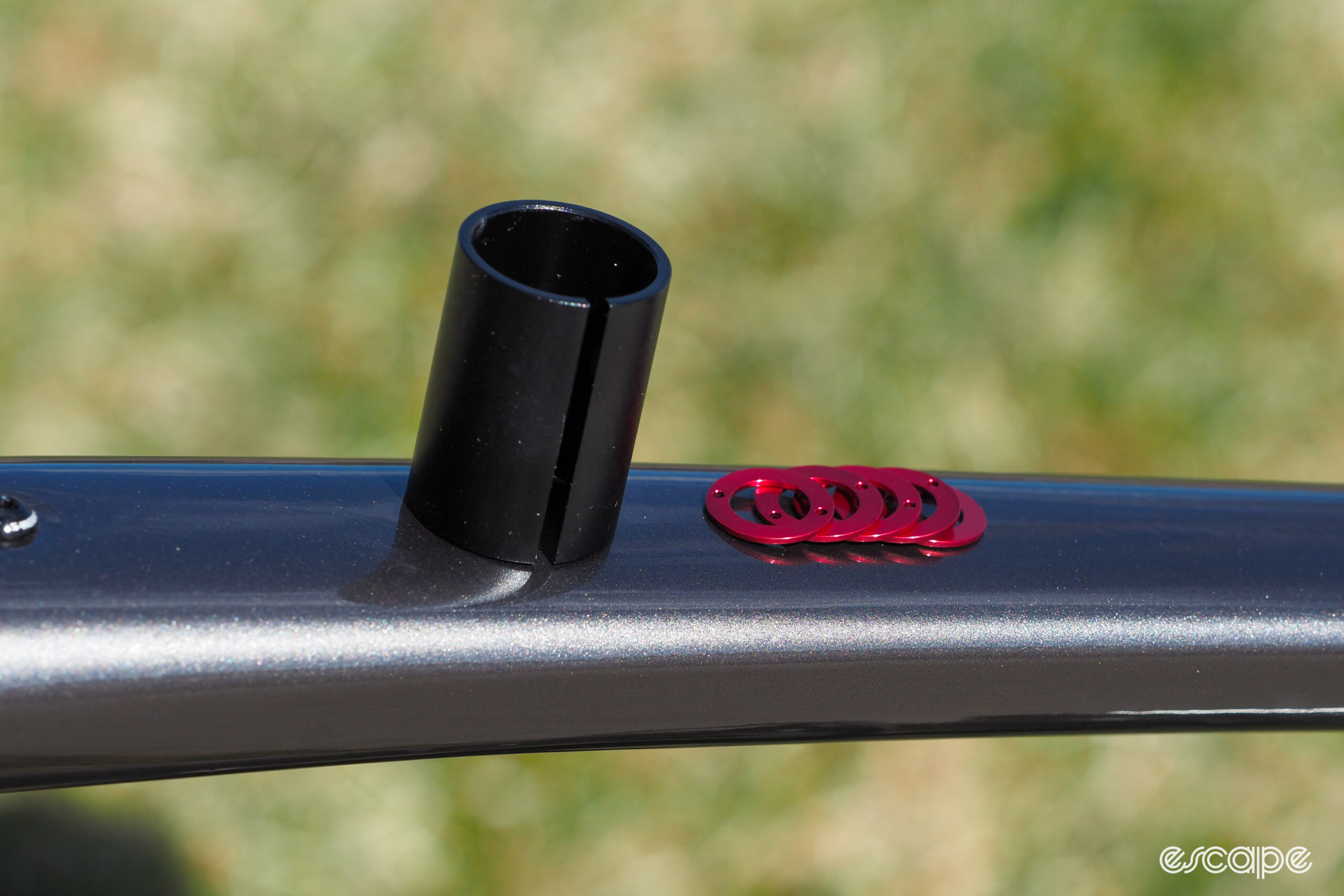
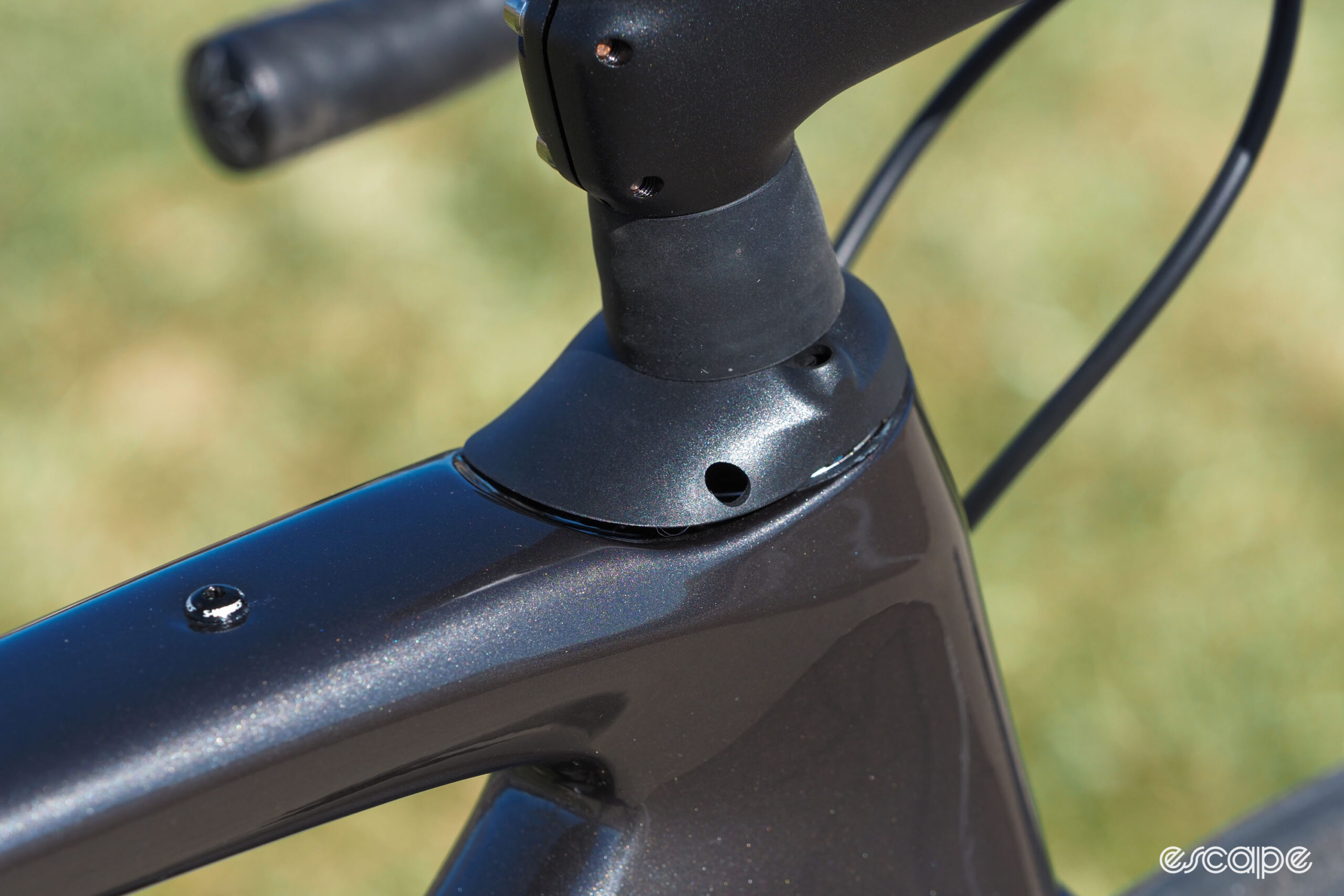
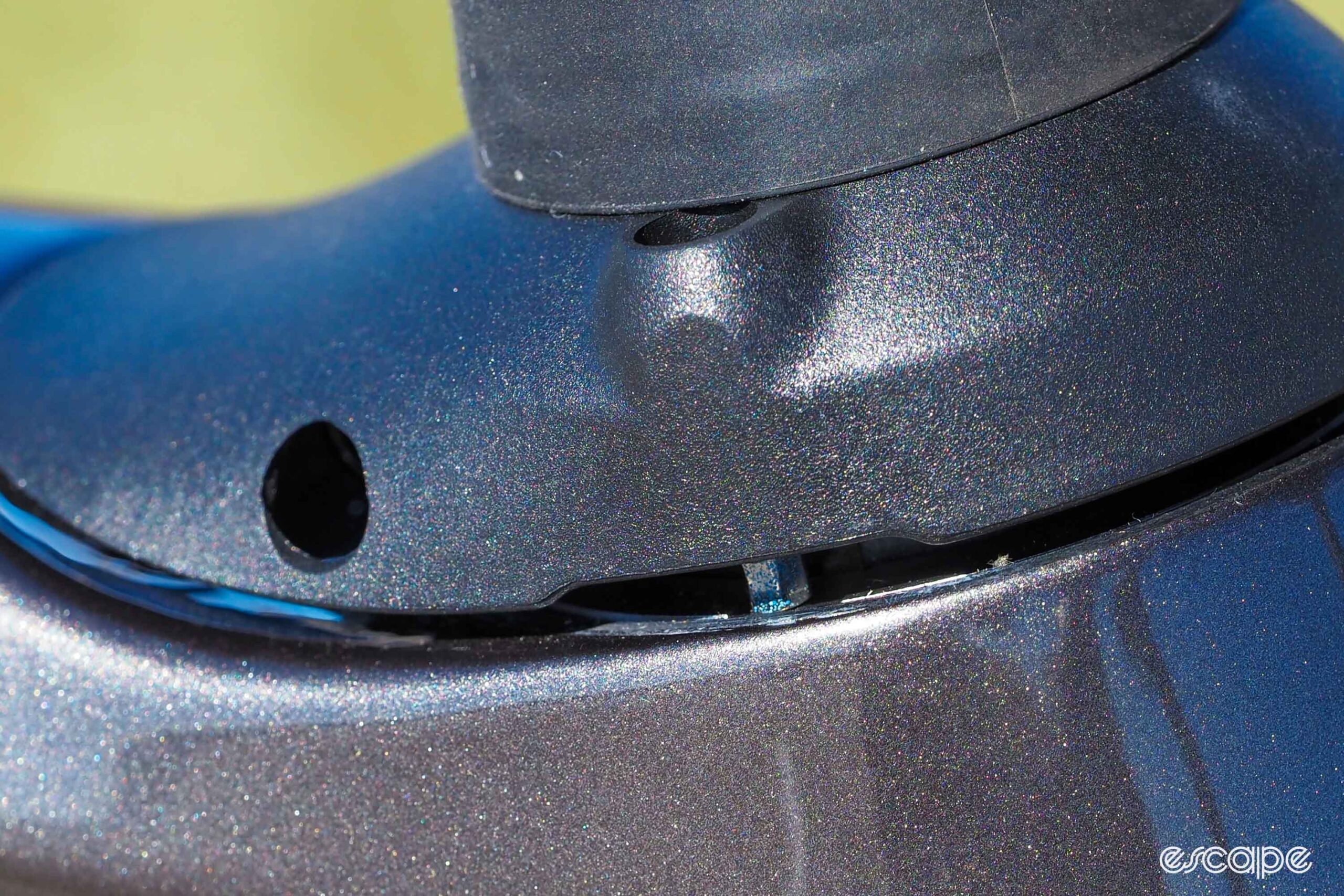

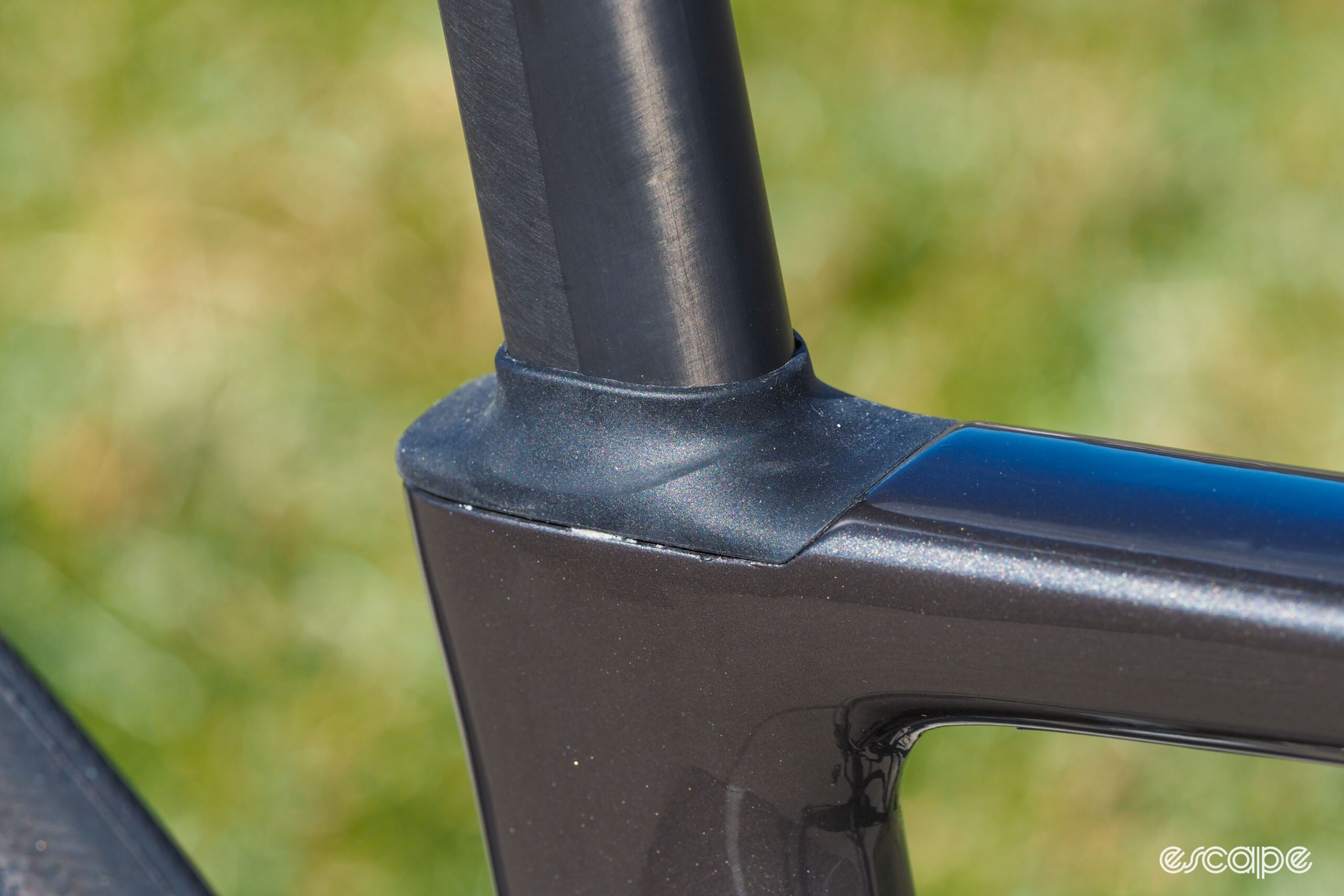
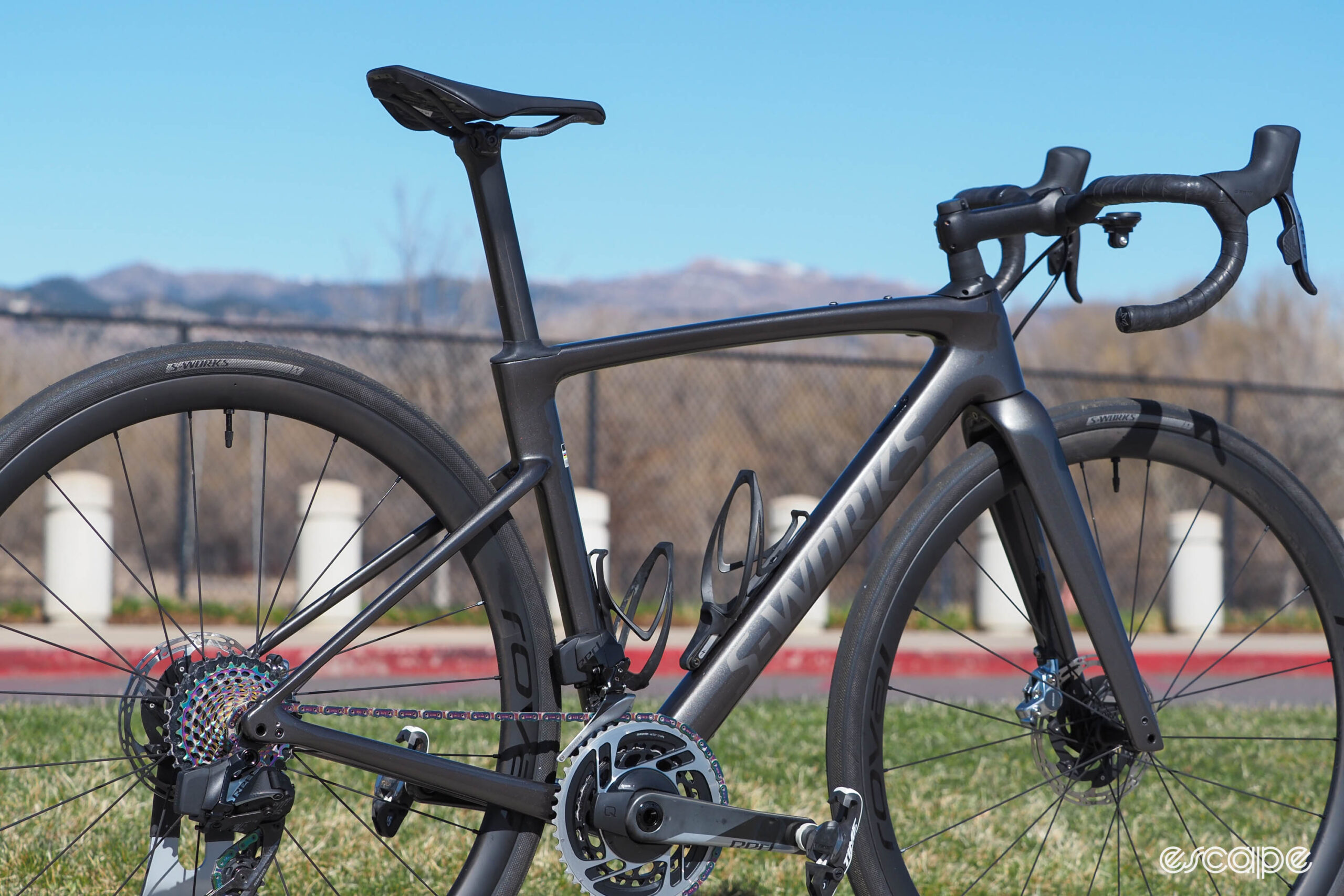
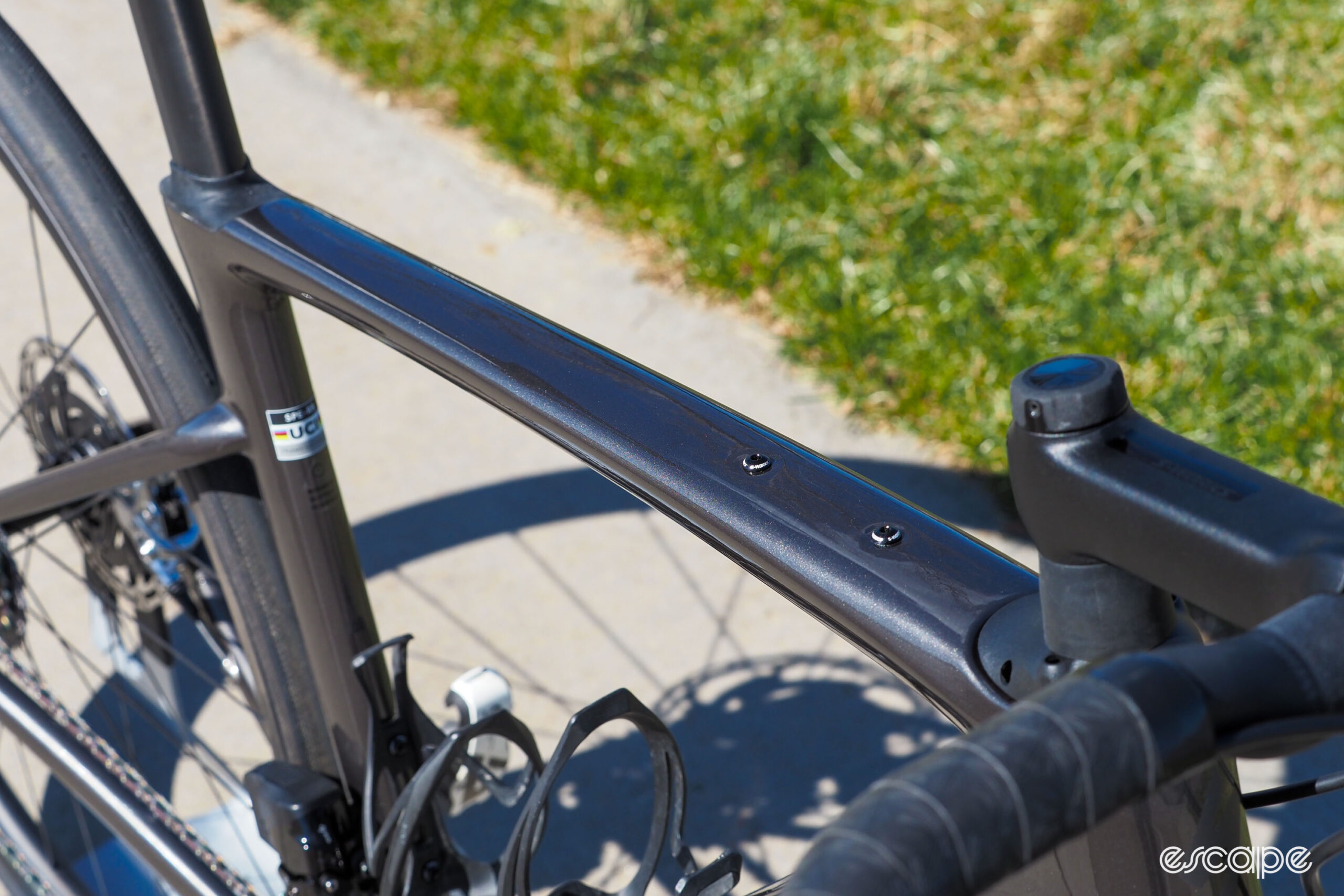
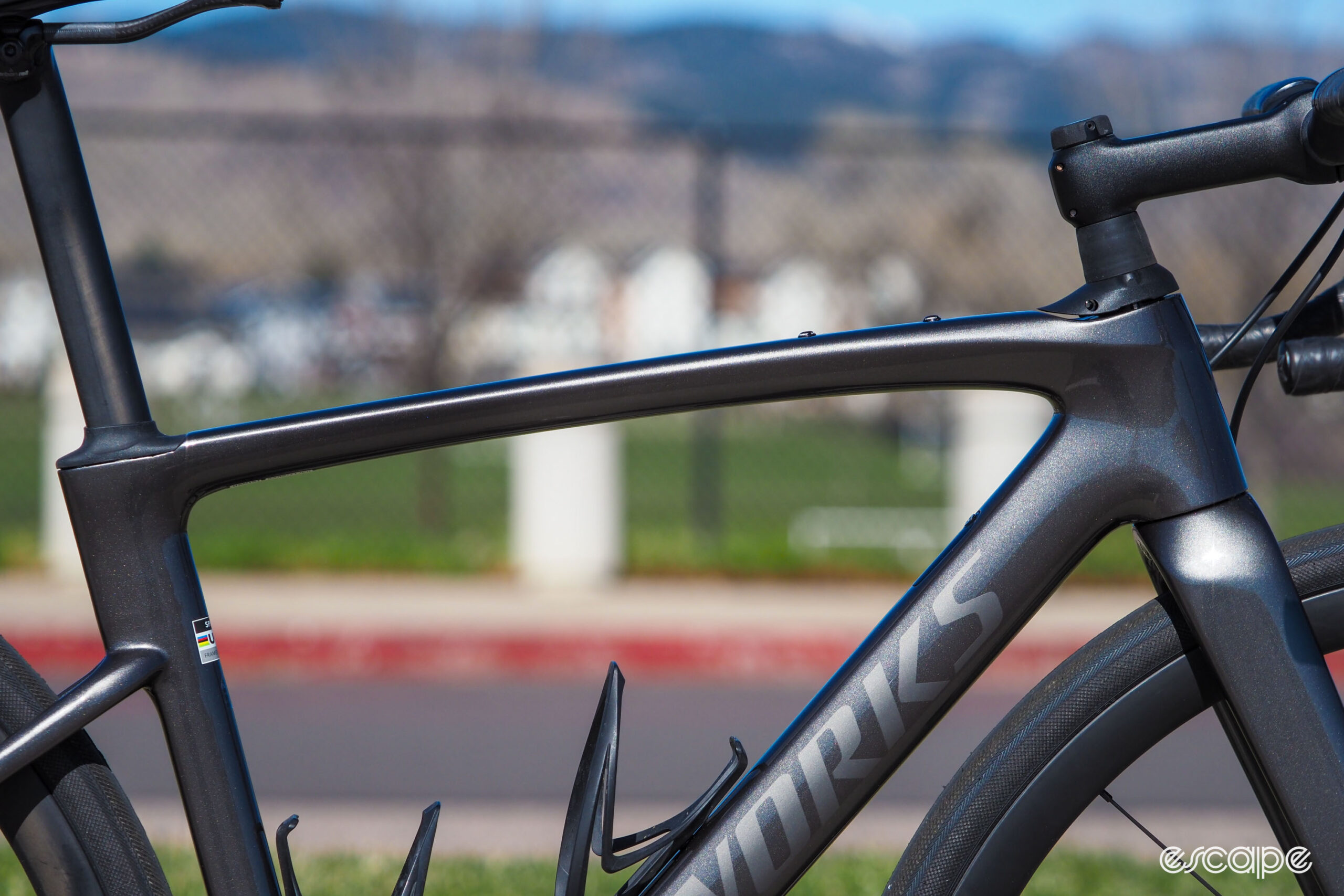
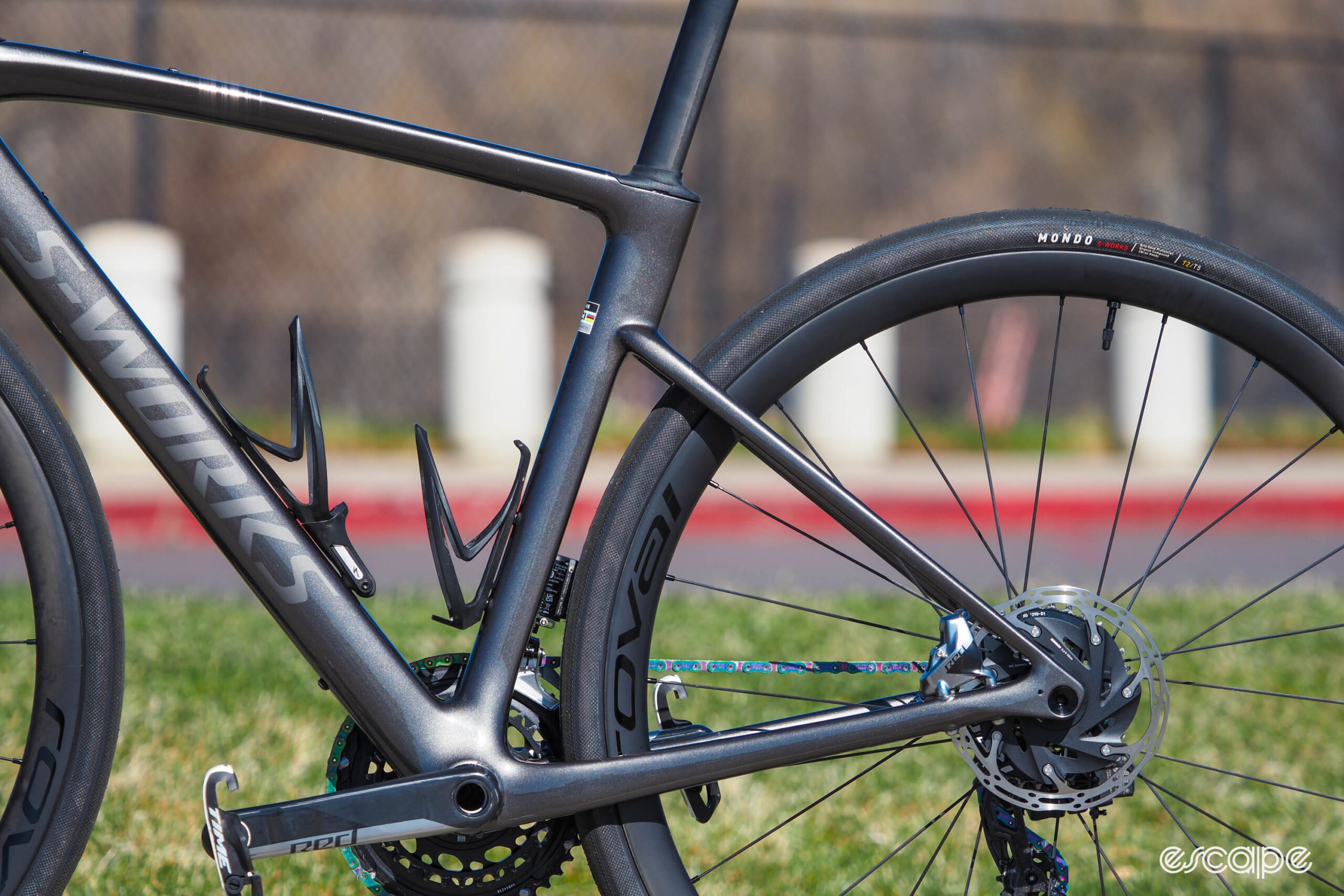


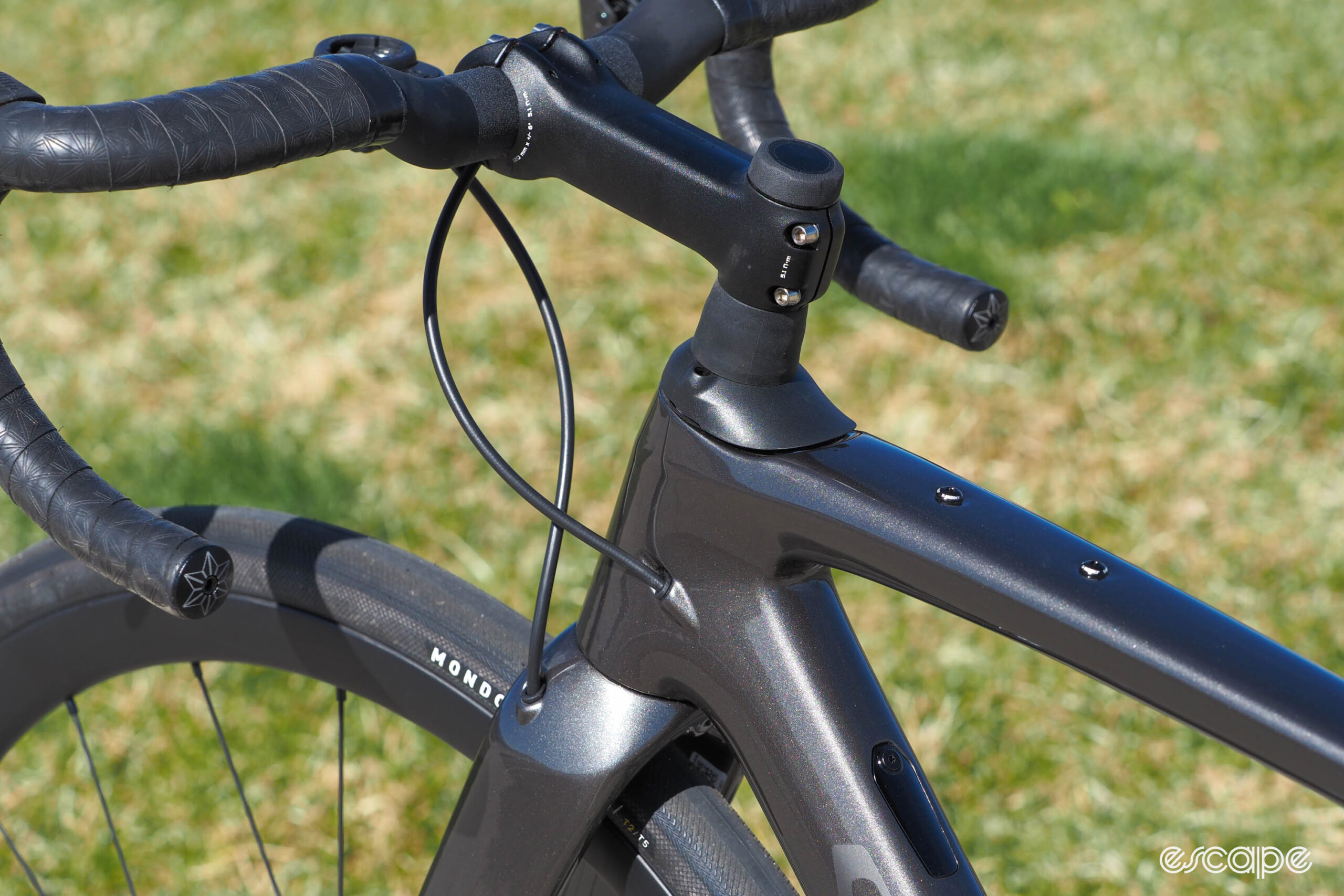
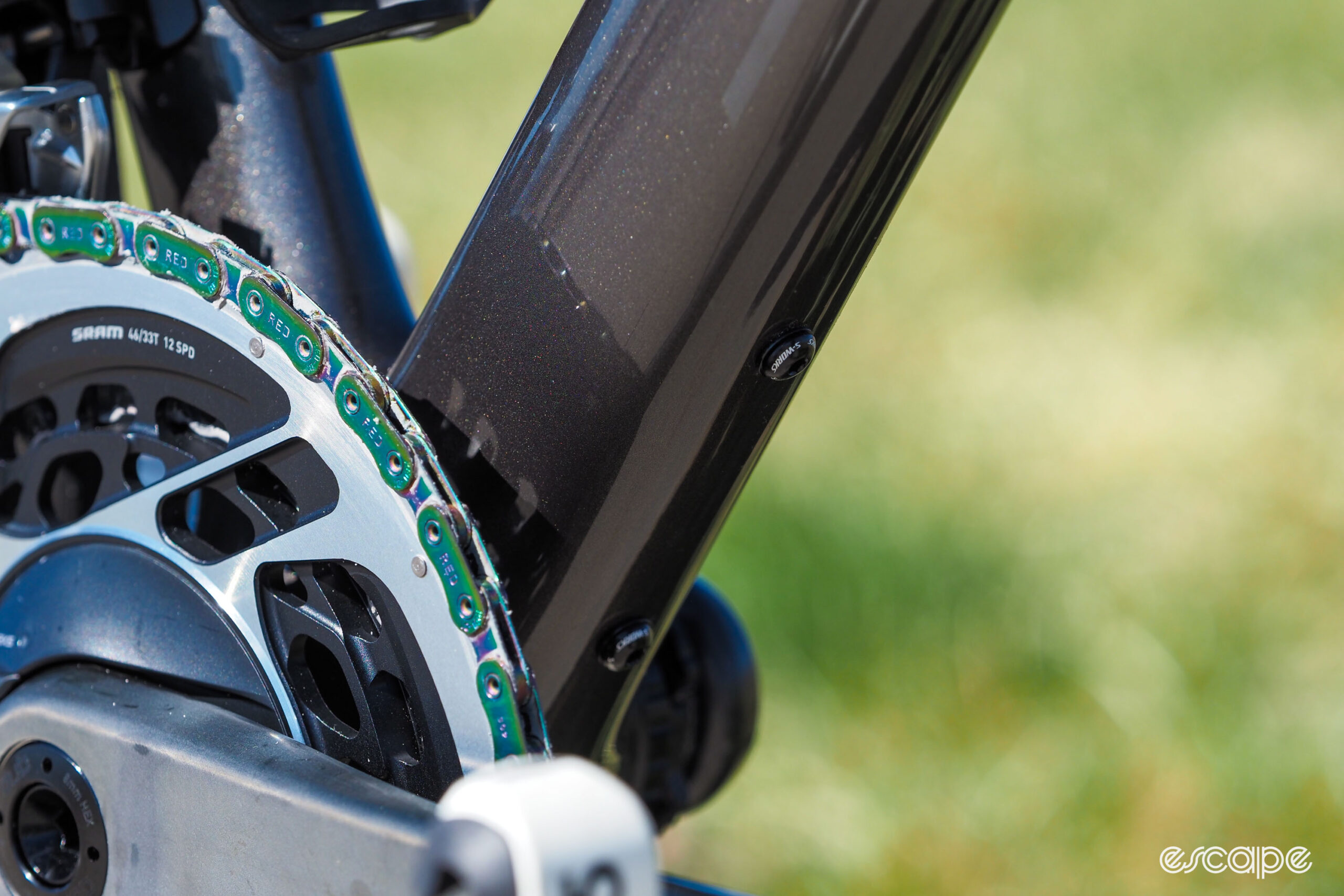
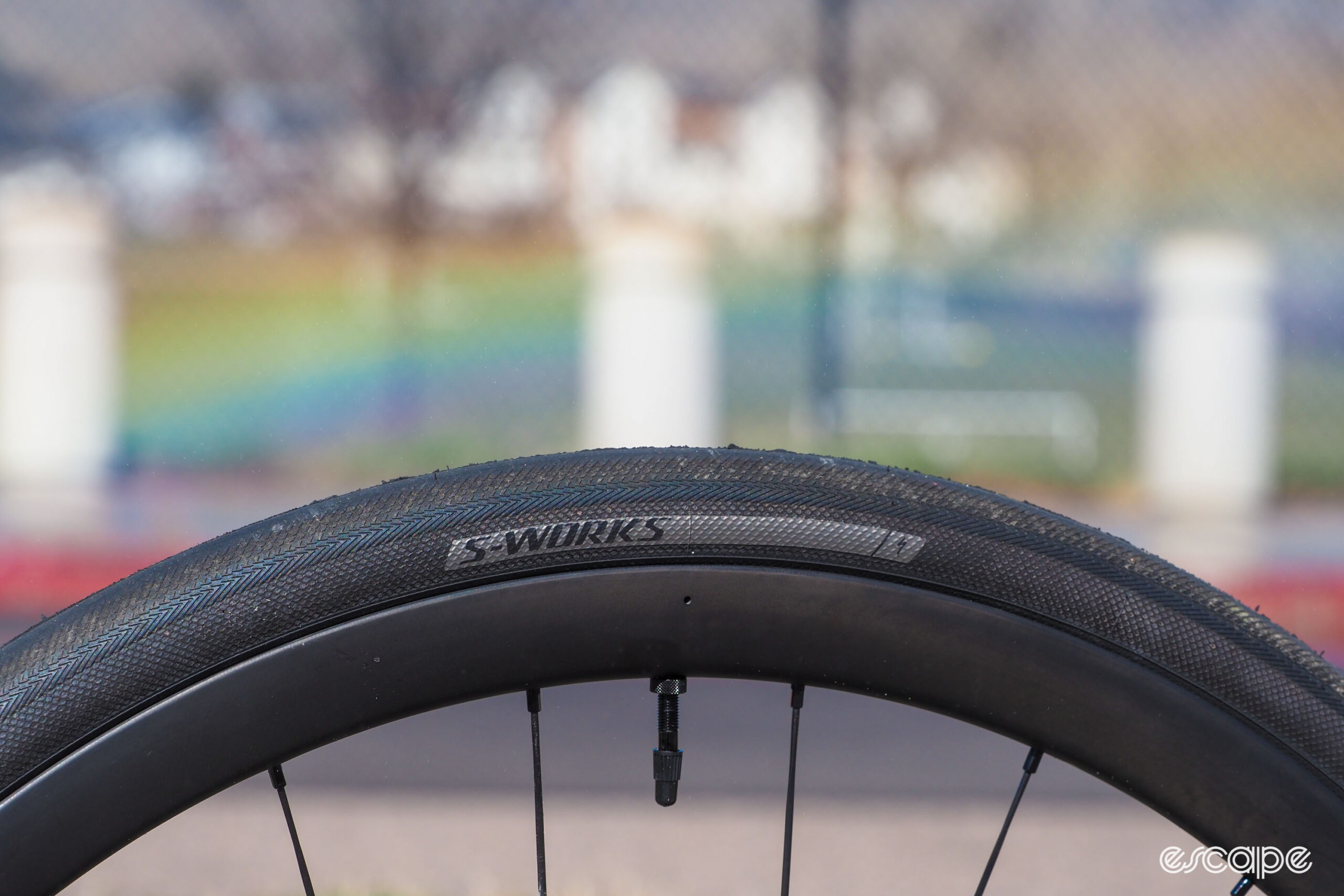
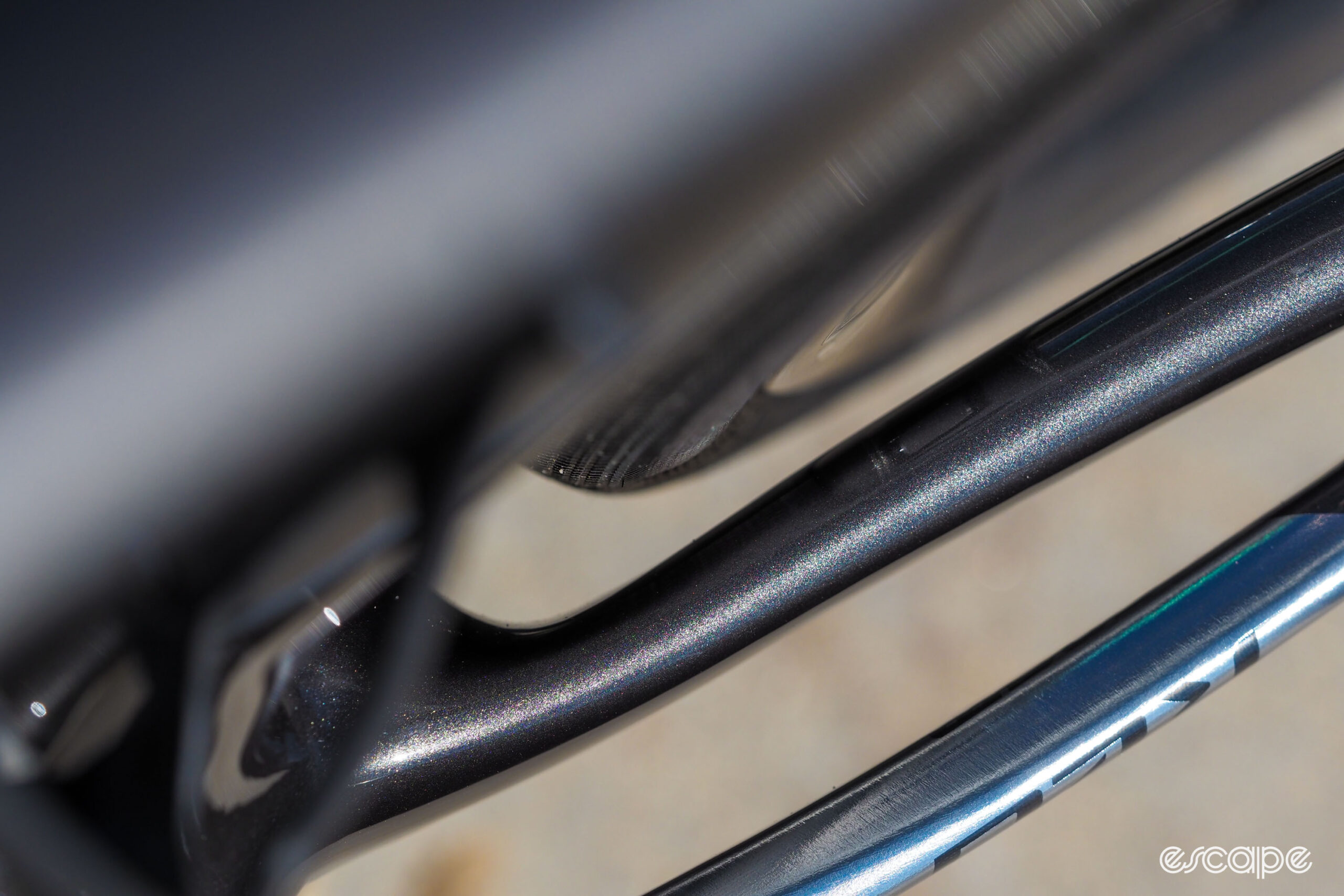
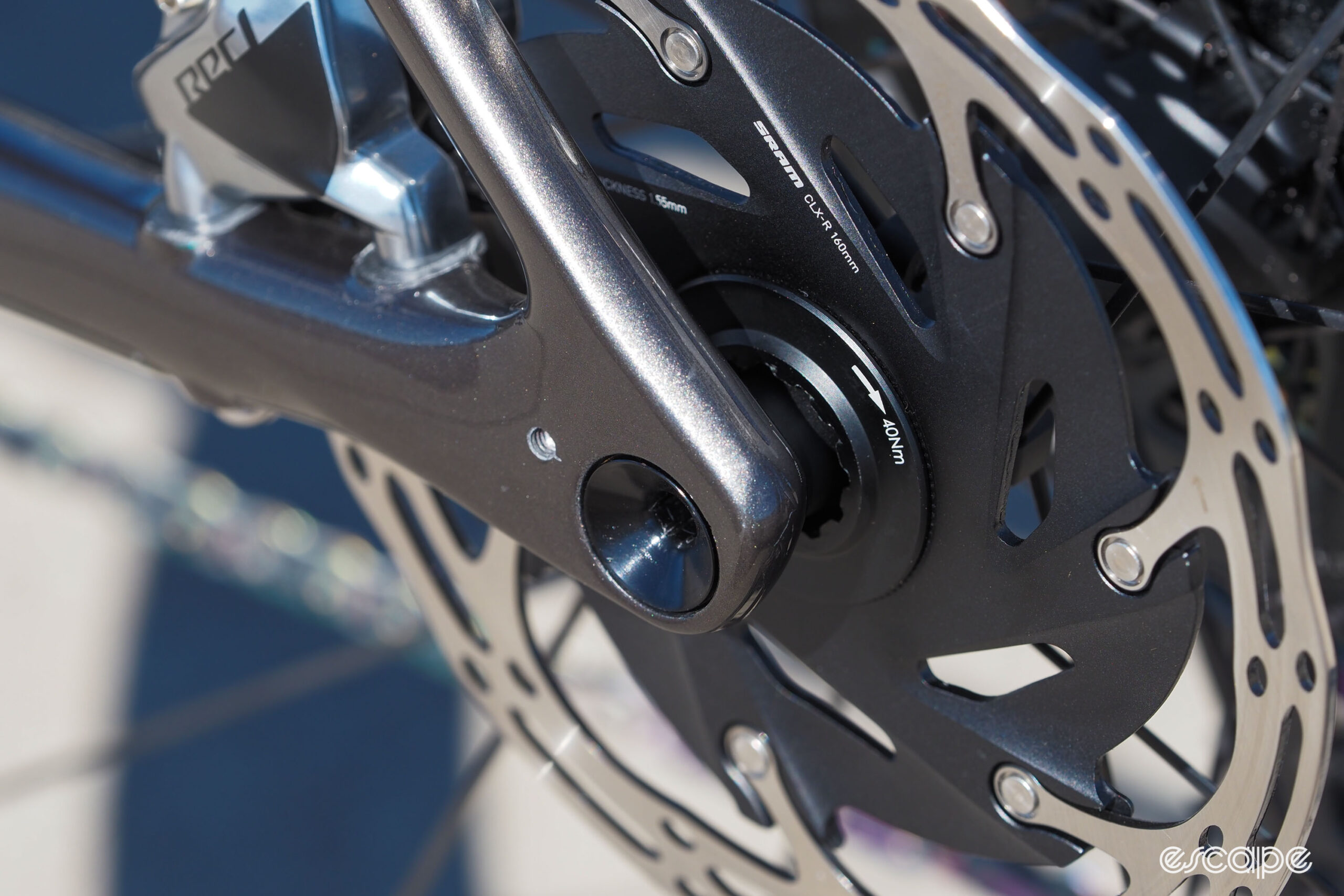
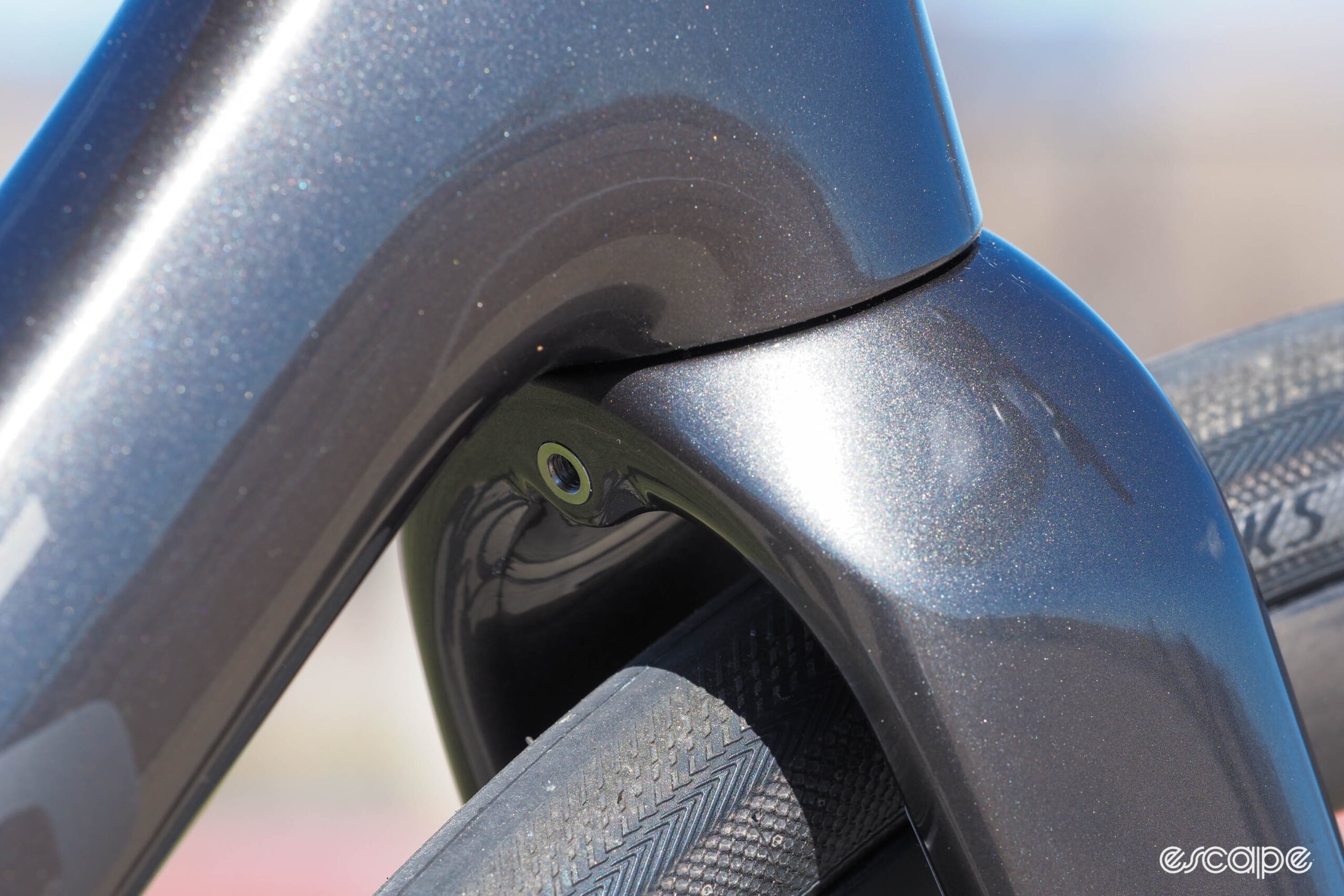

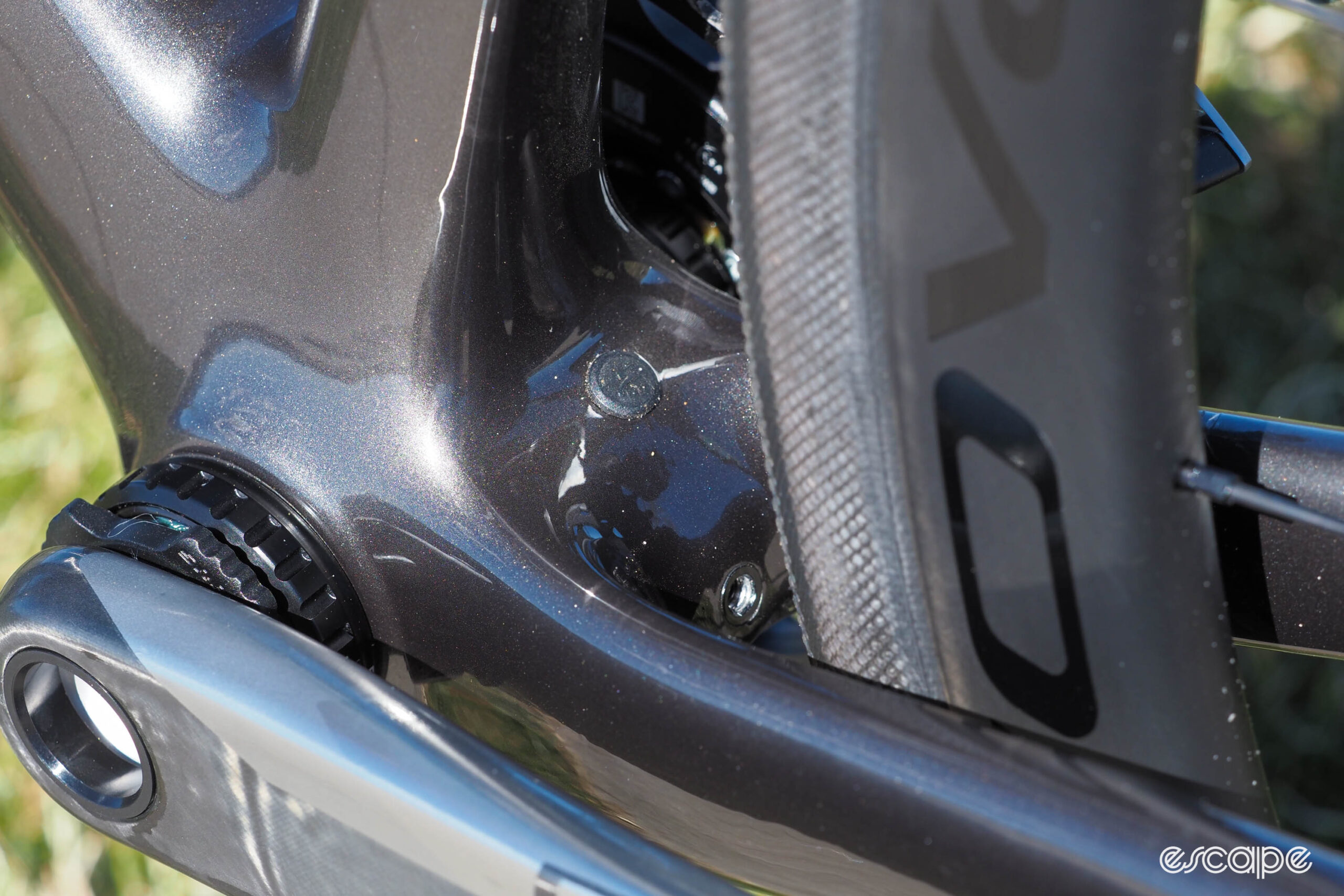

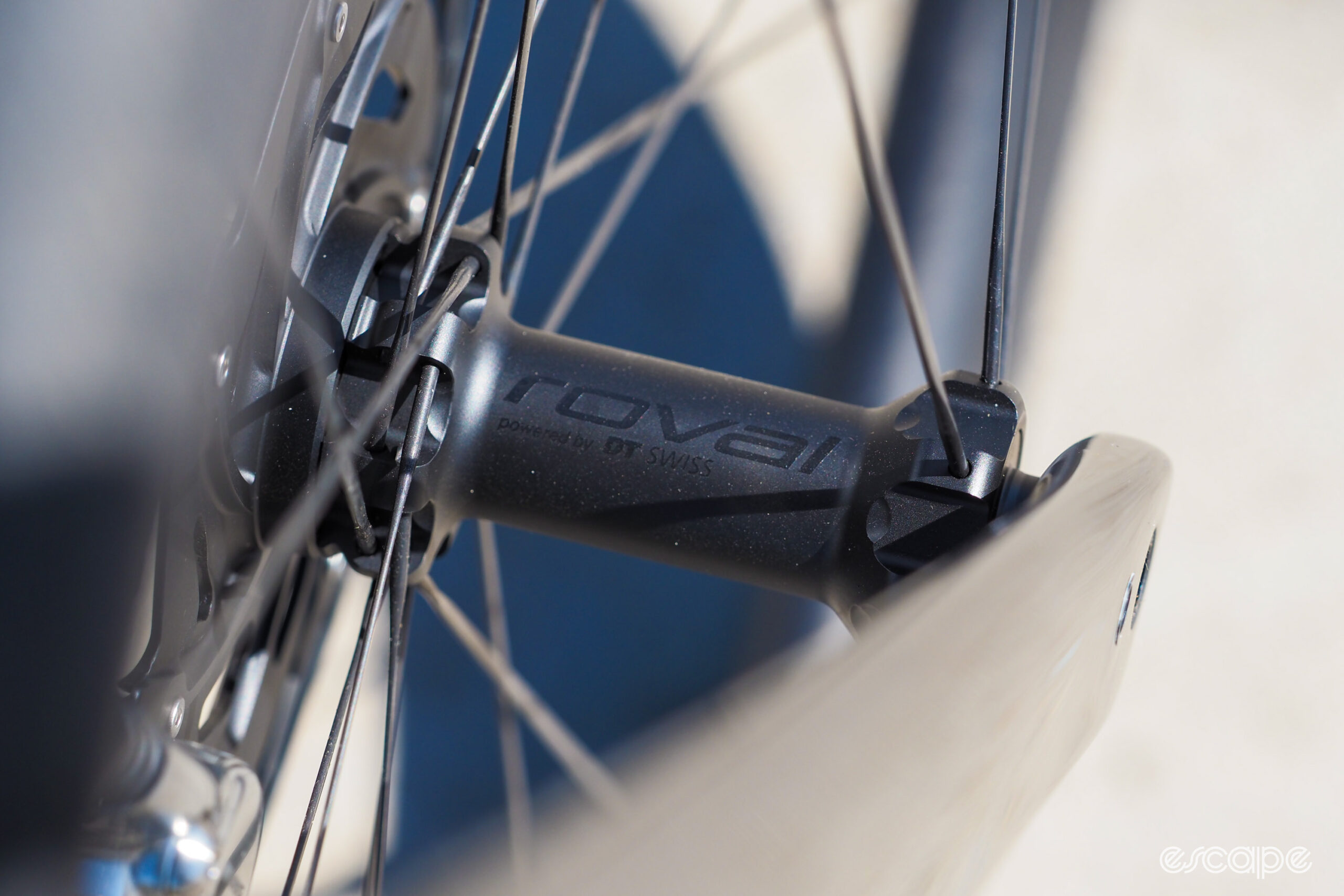
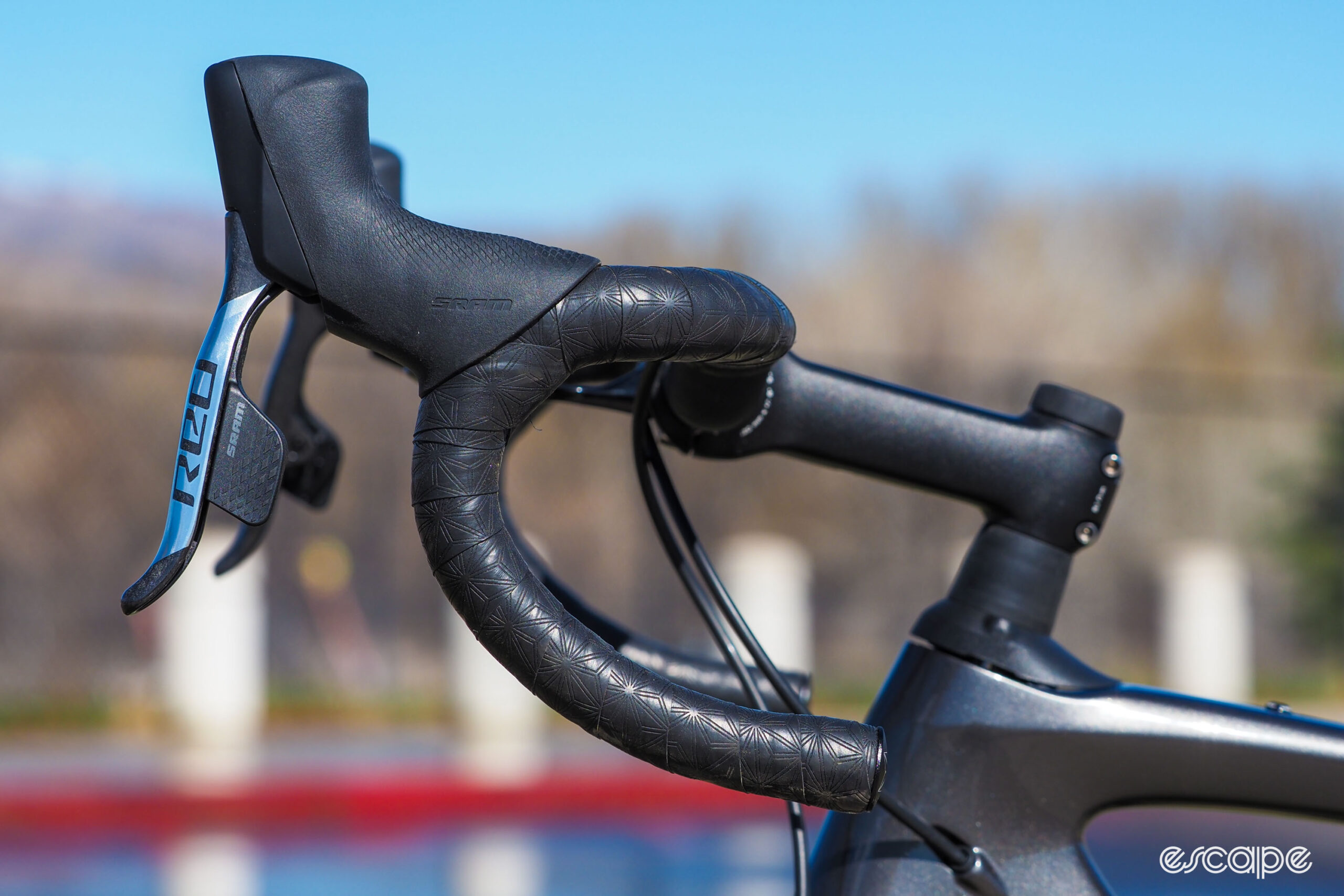


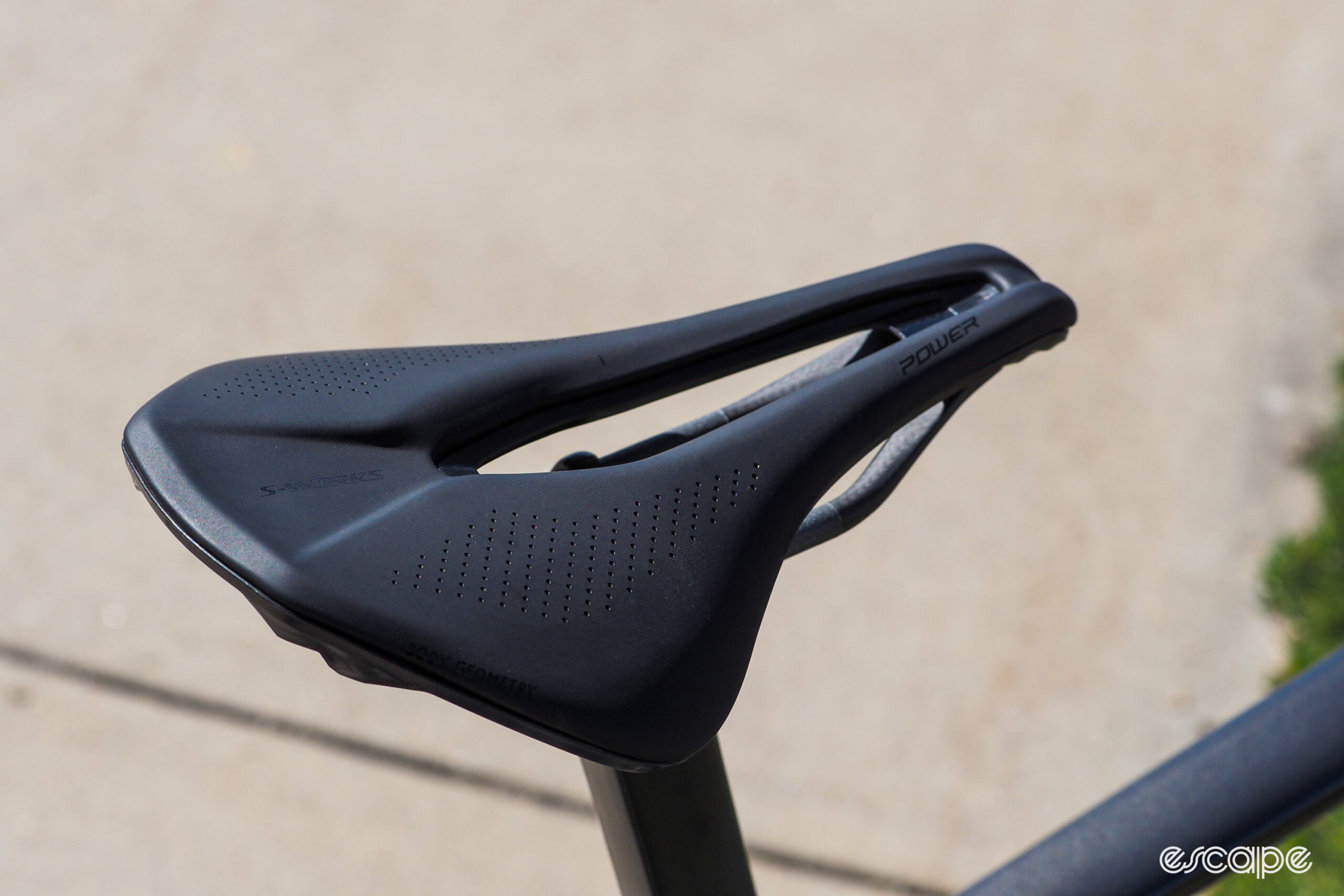
Did we do a good job with this story?

